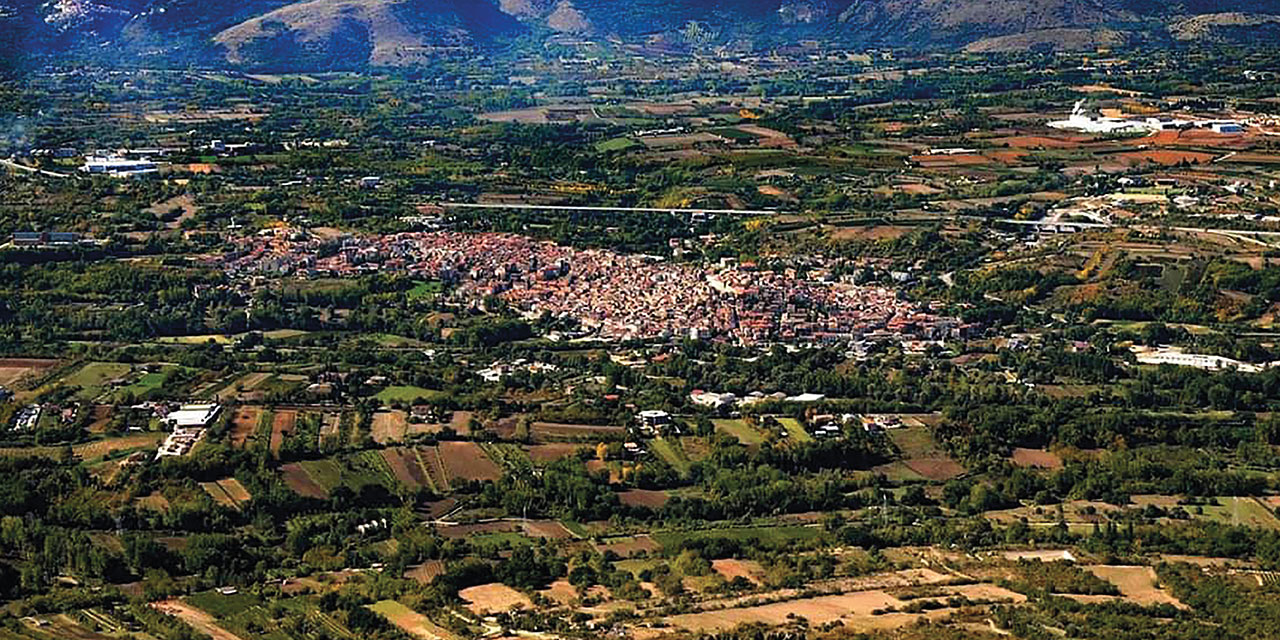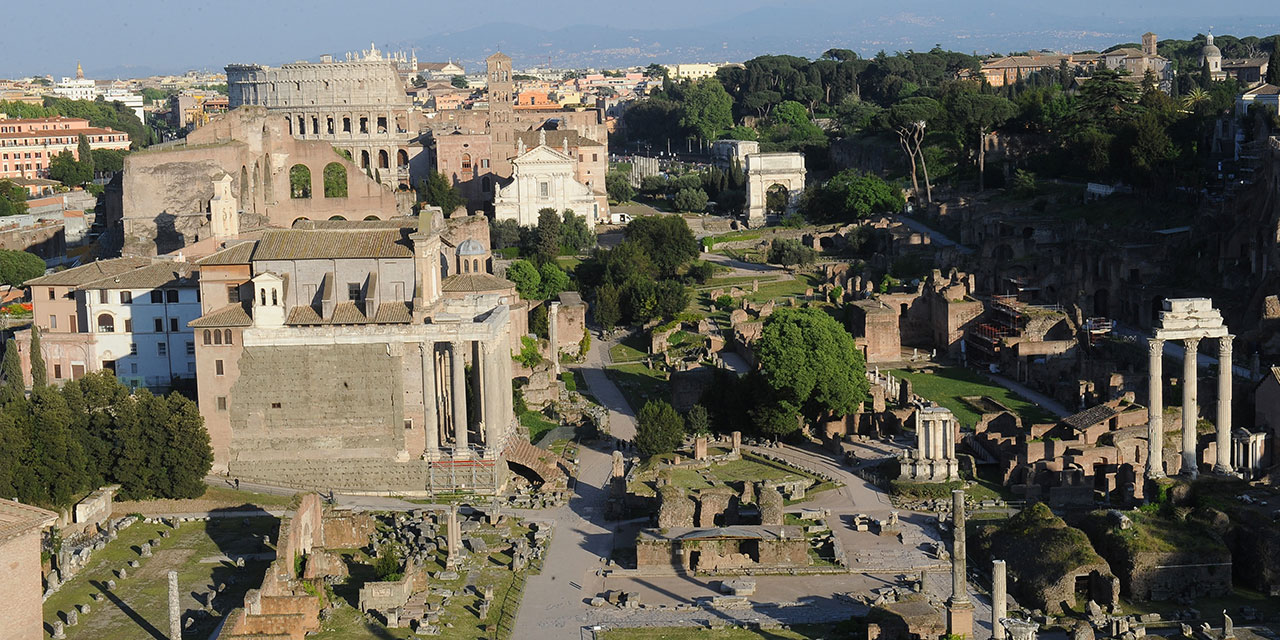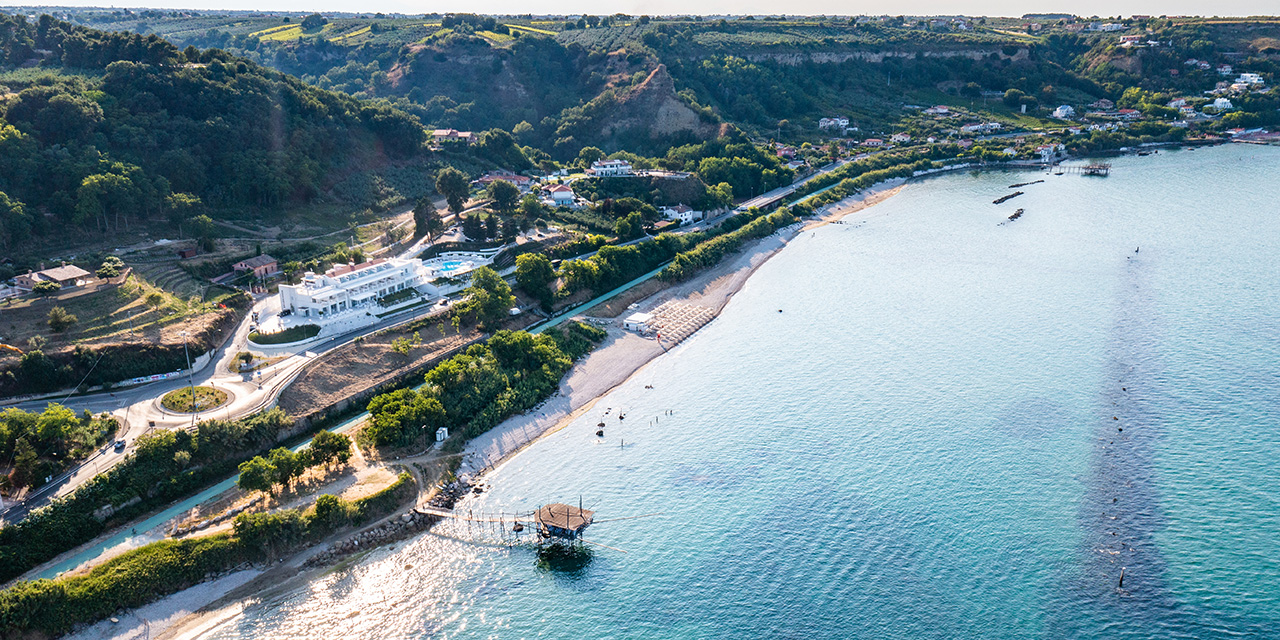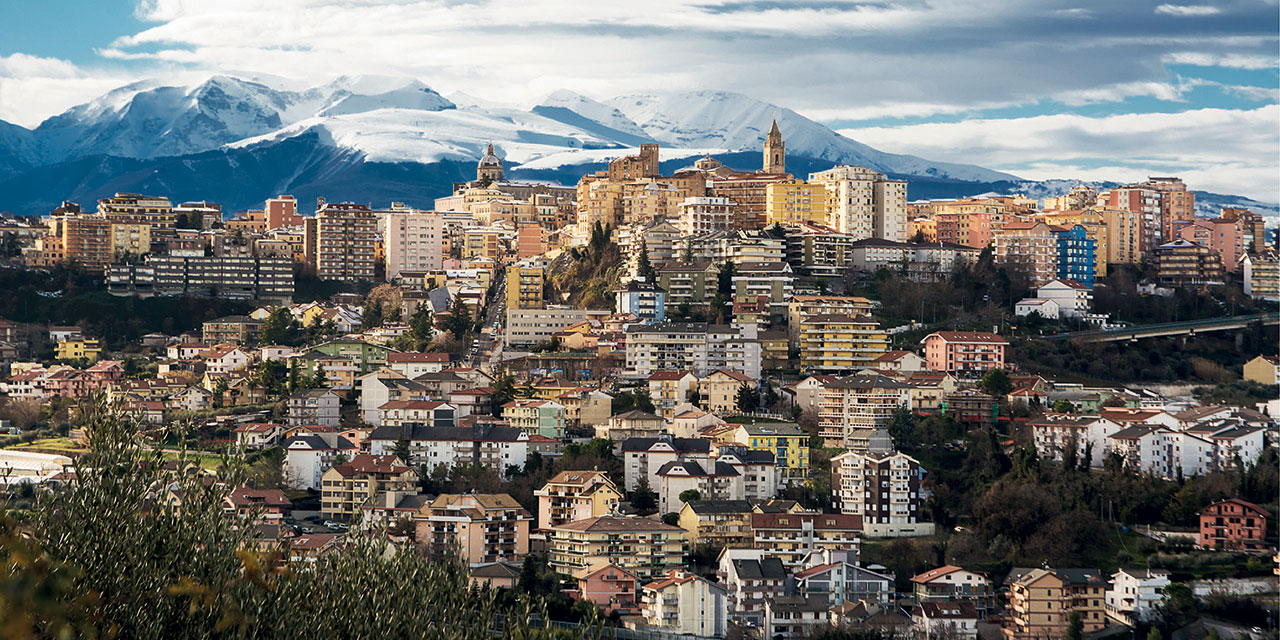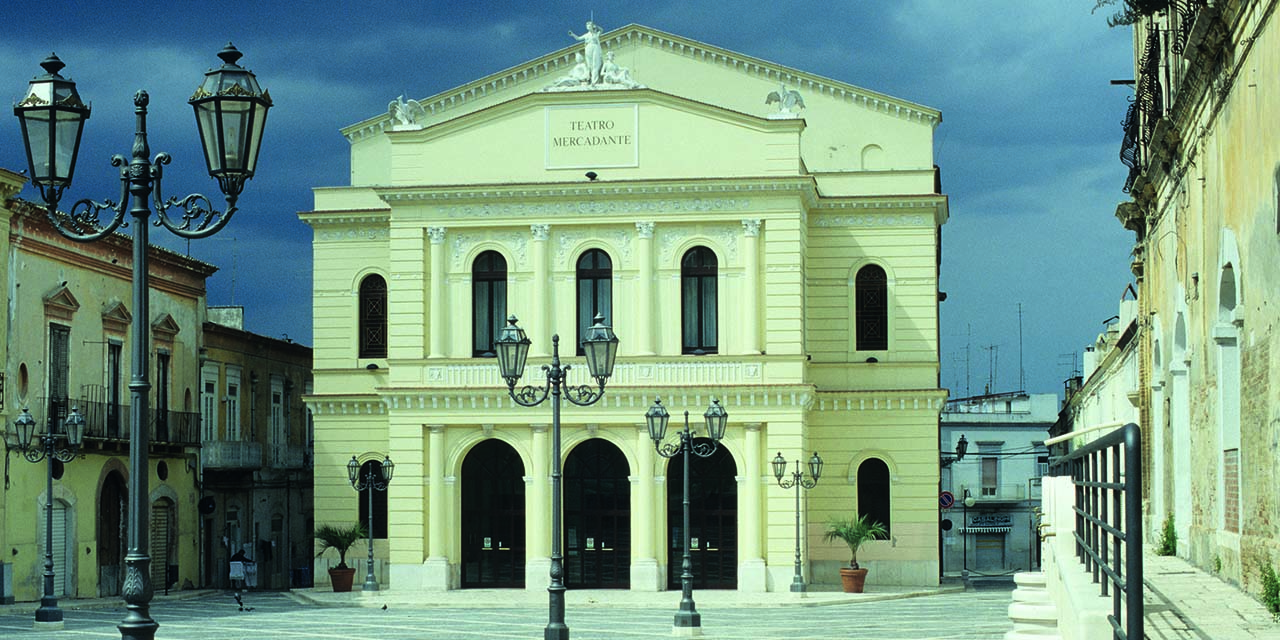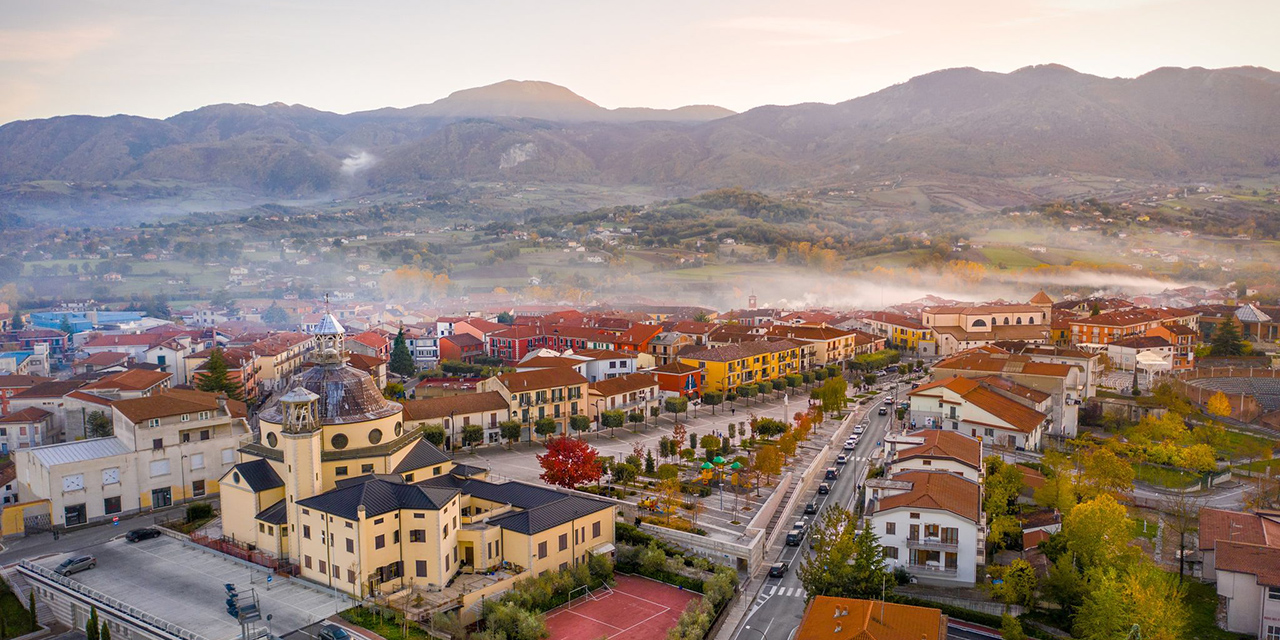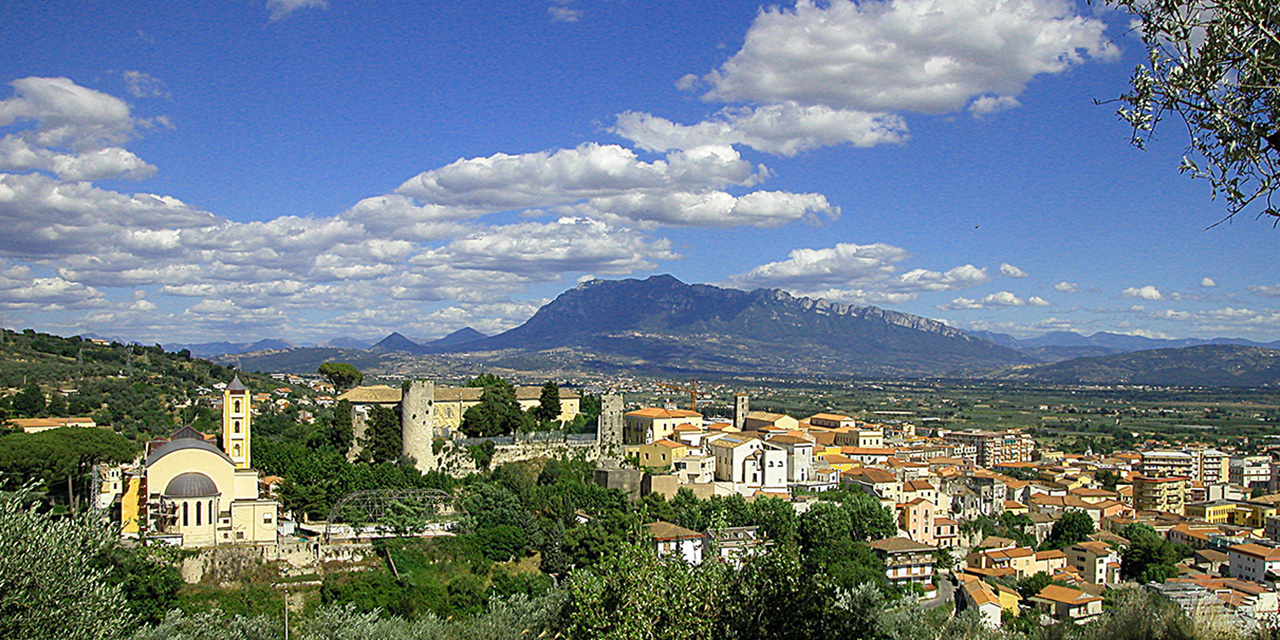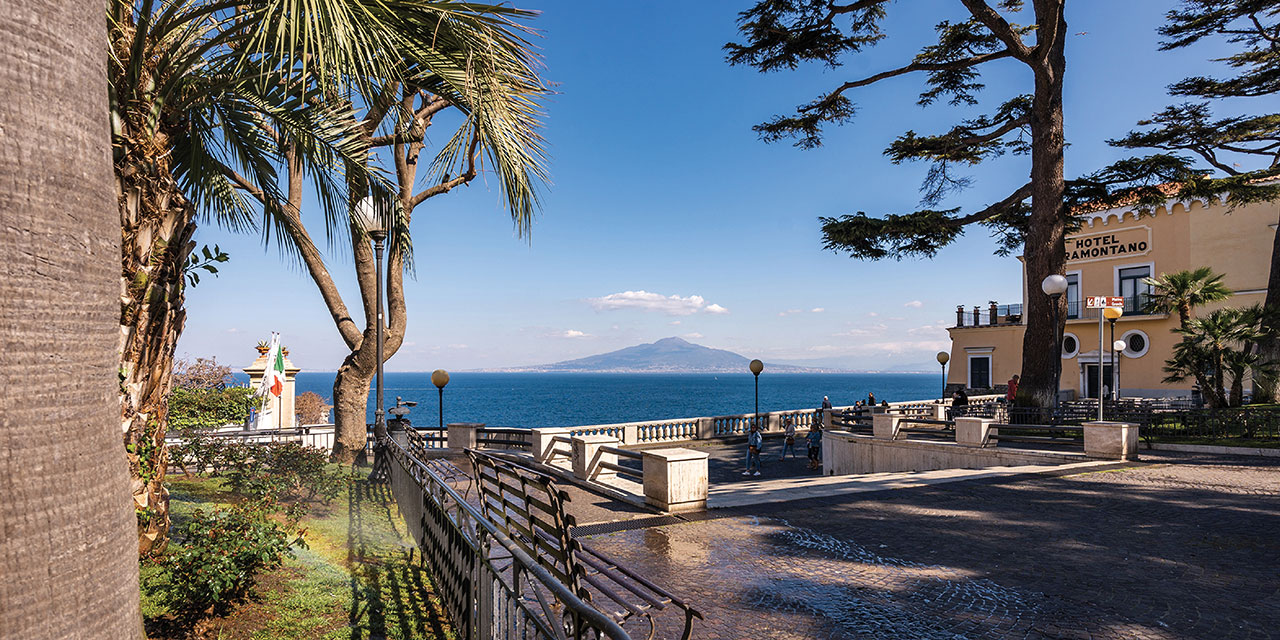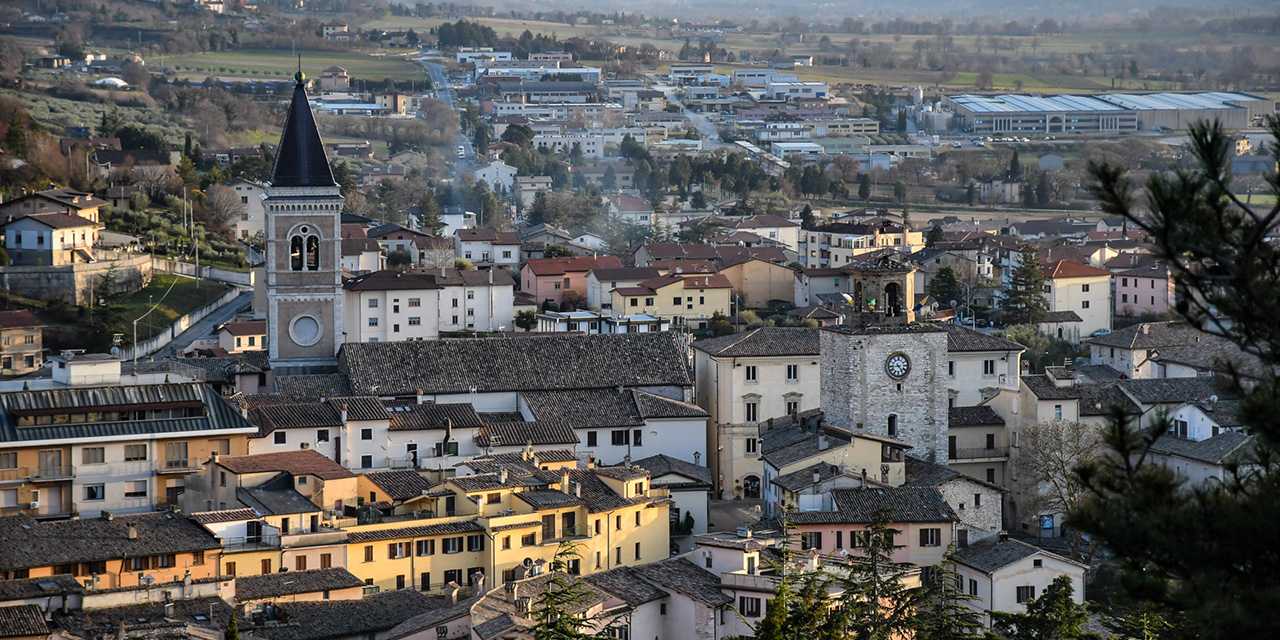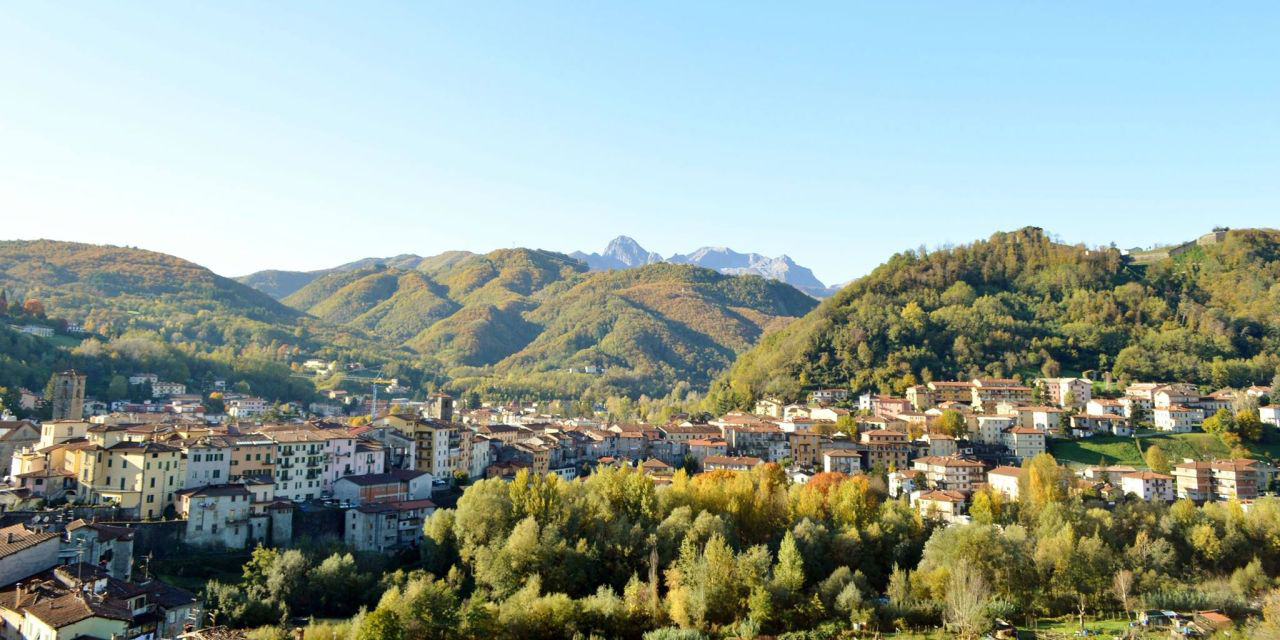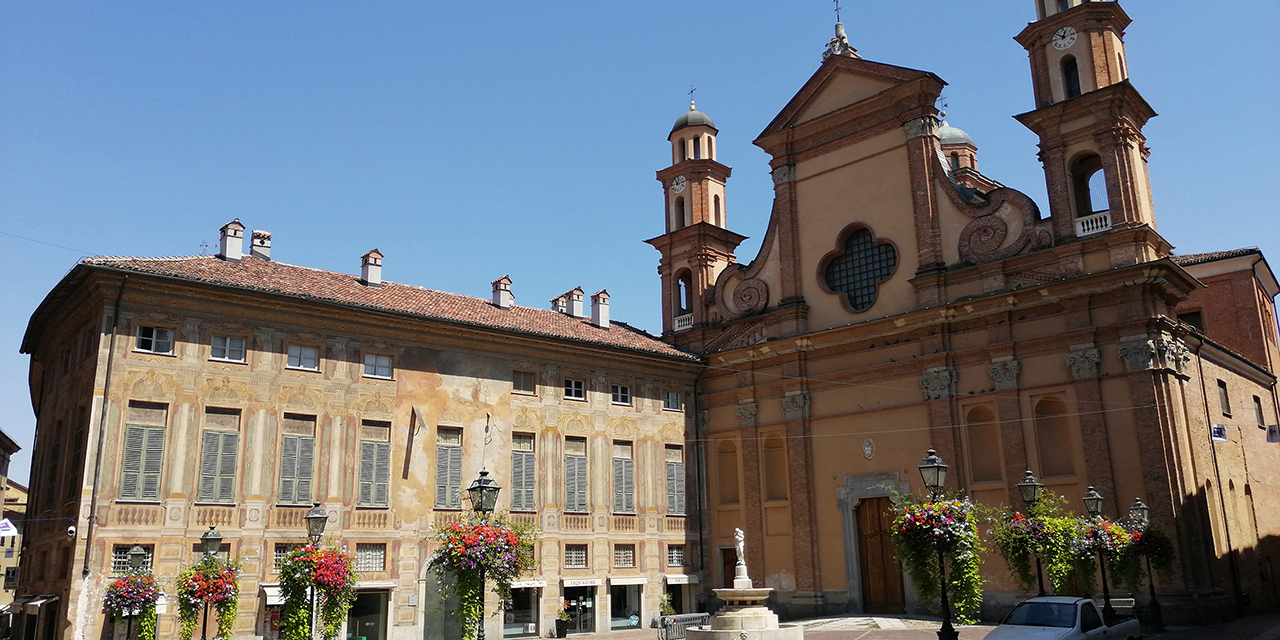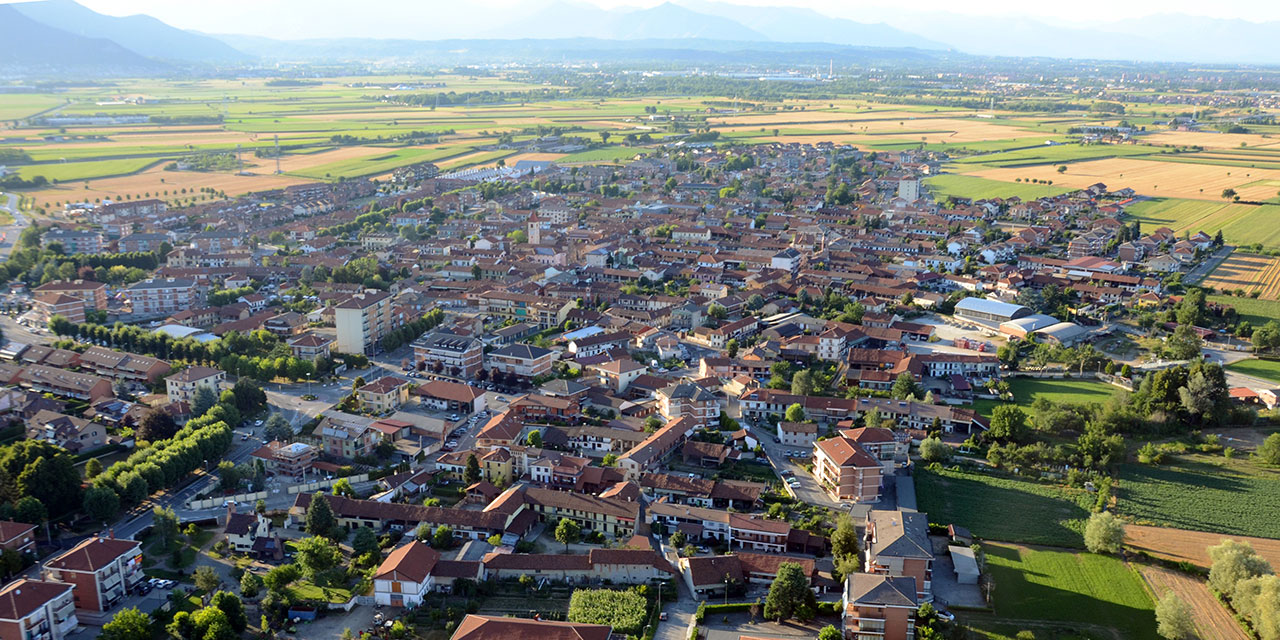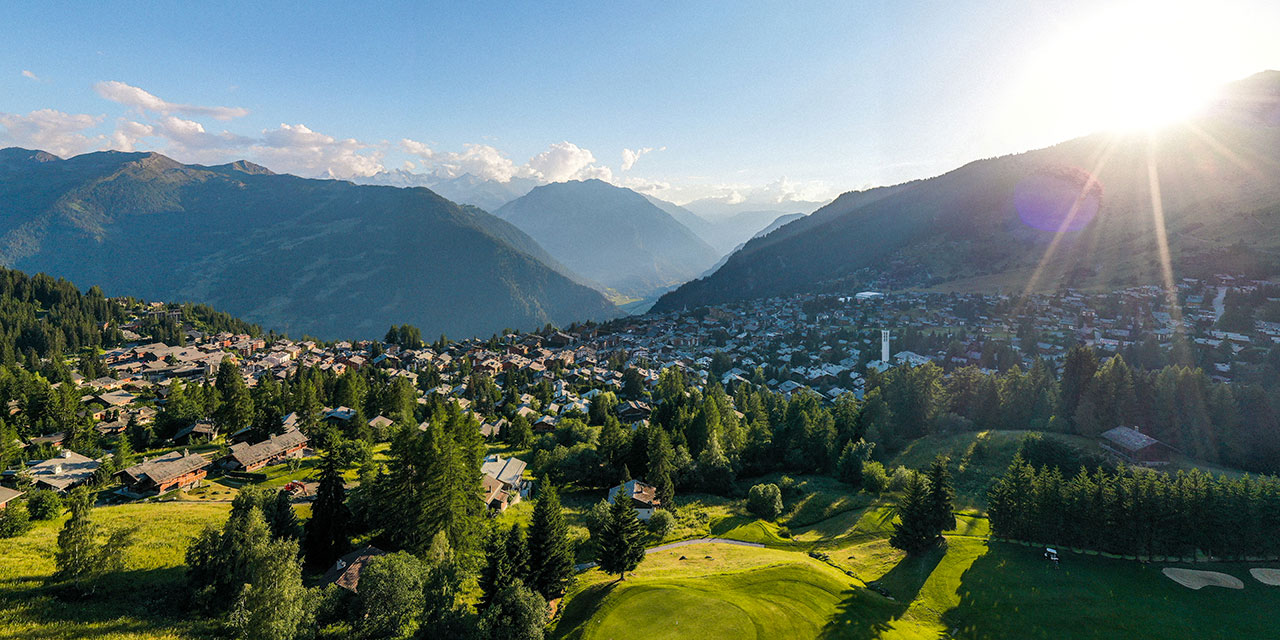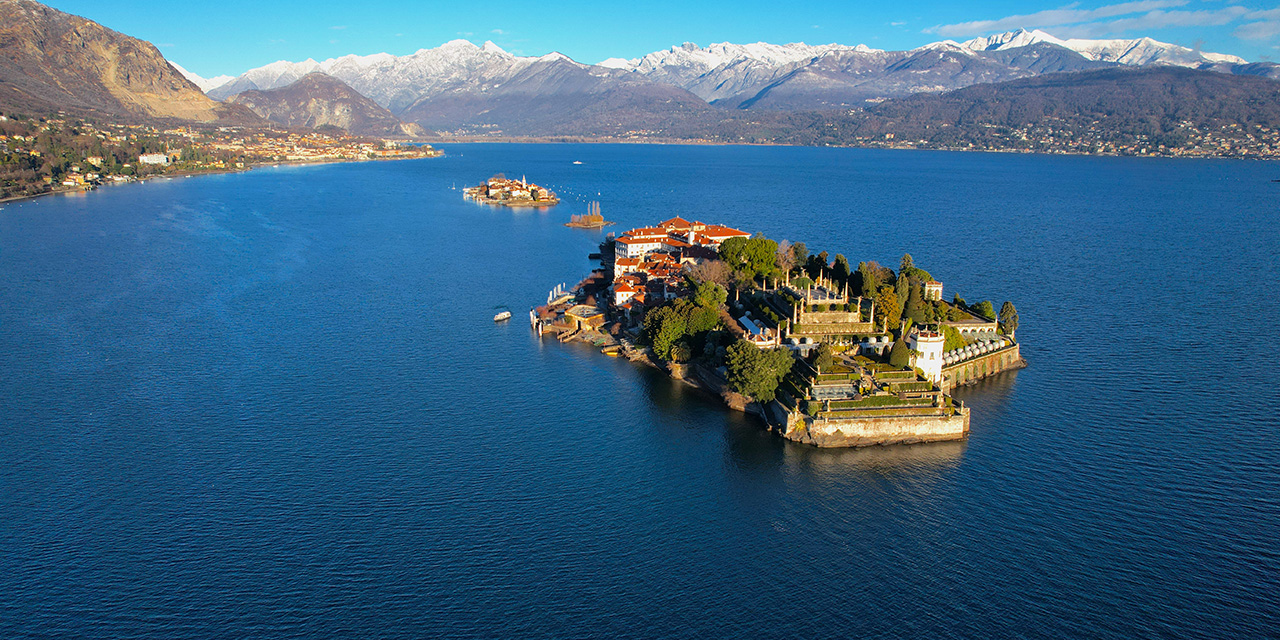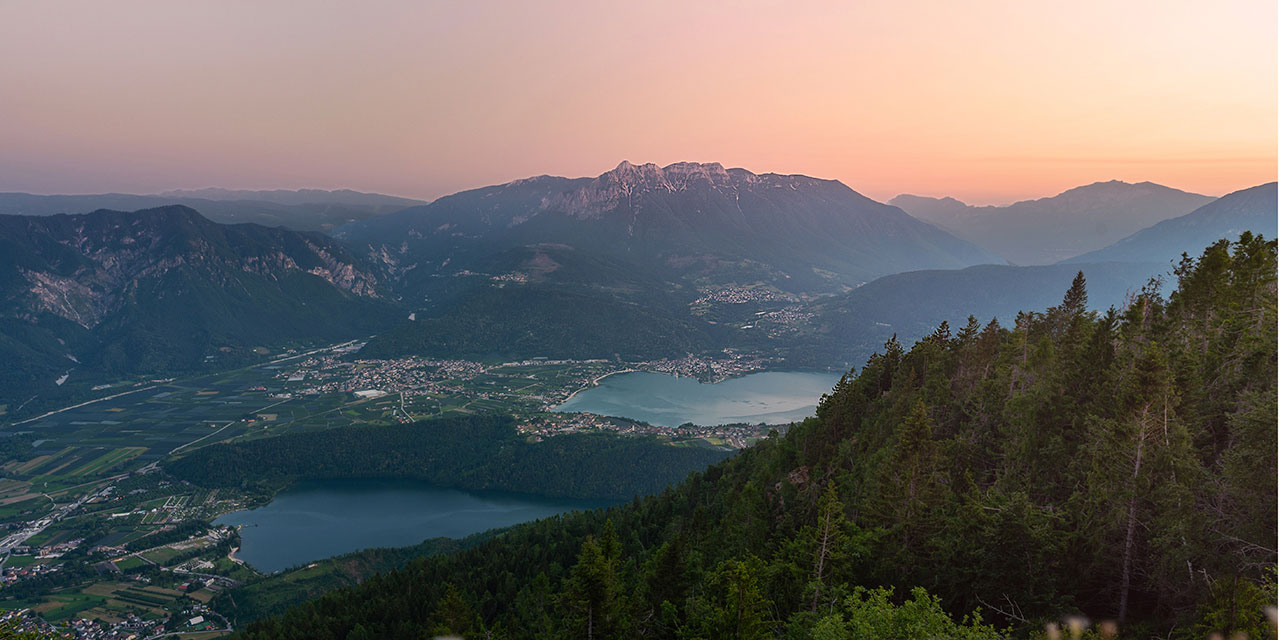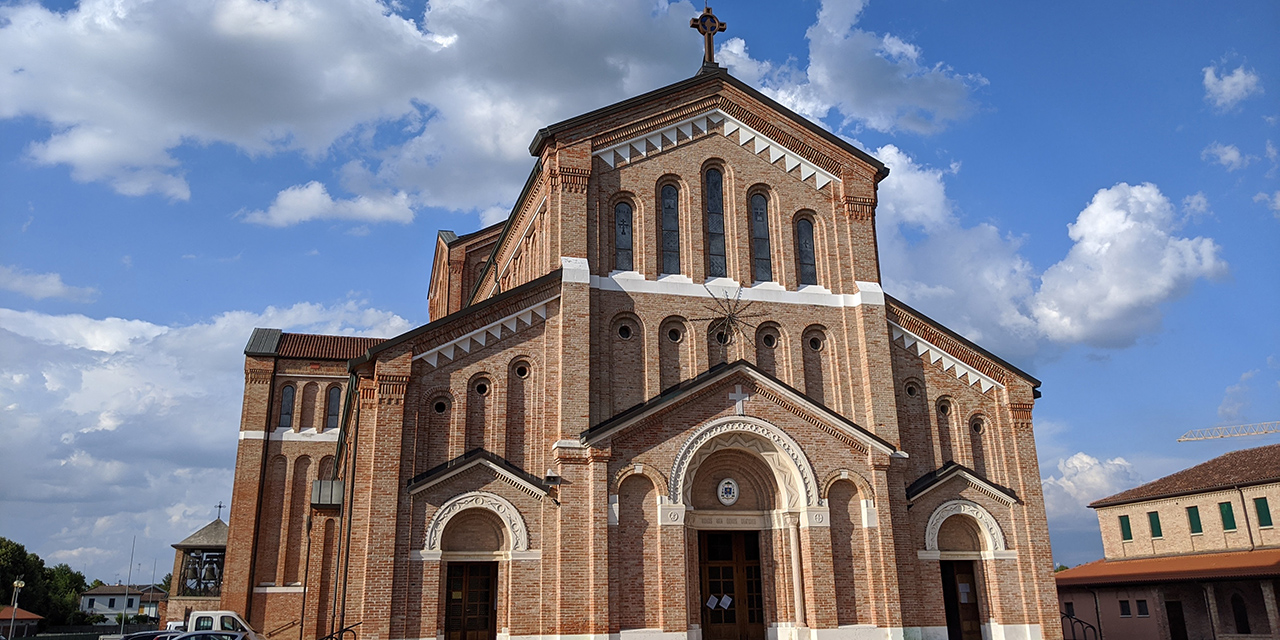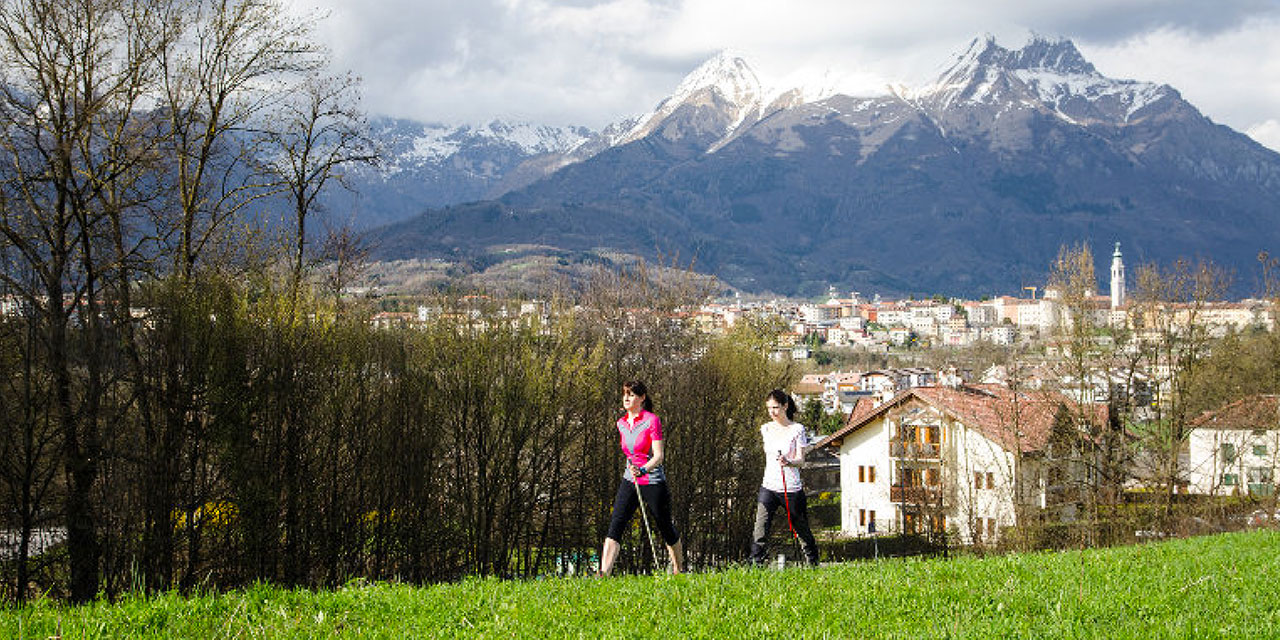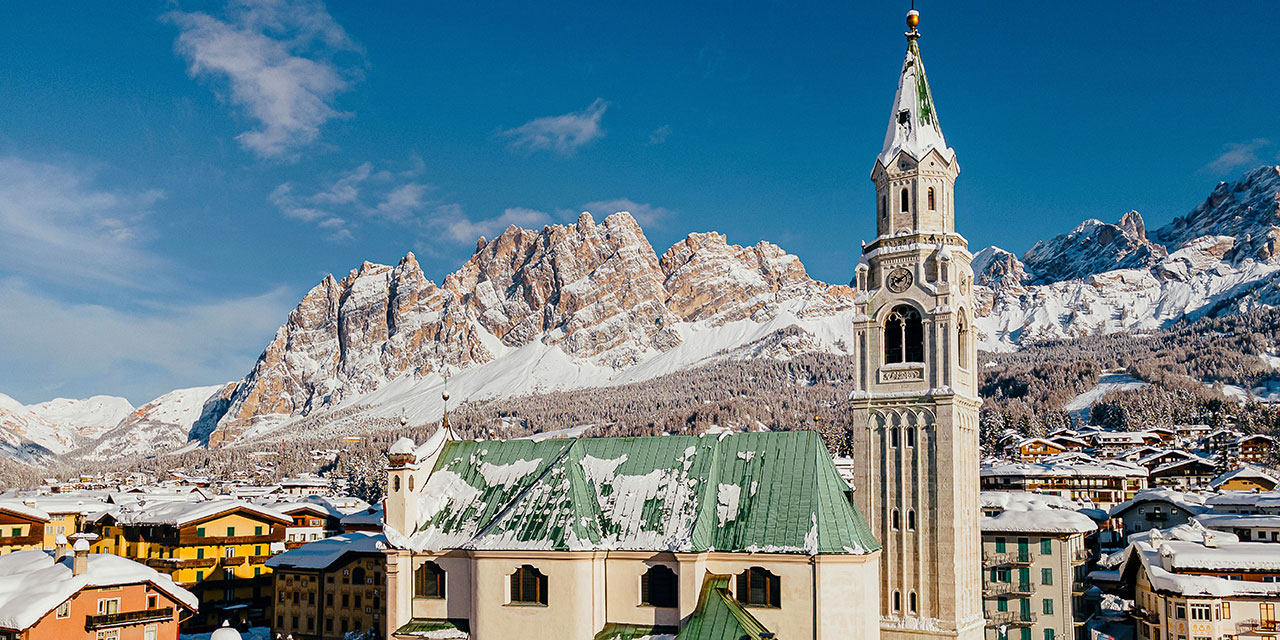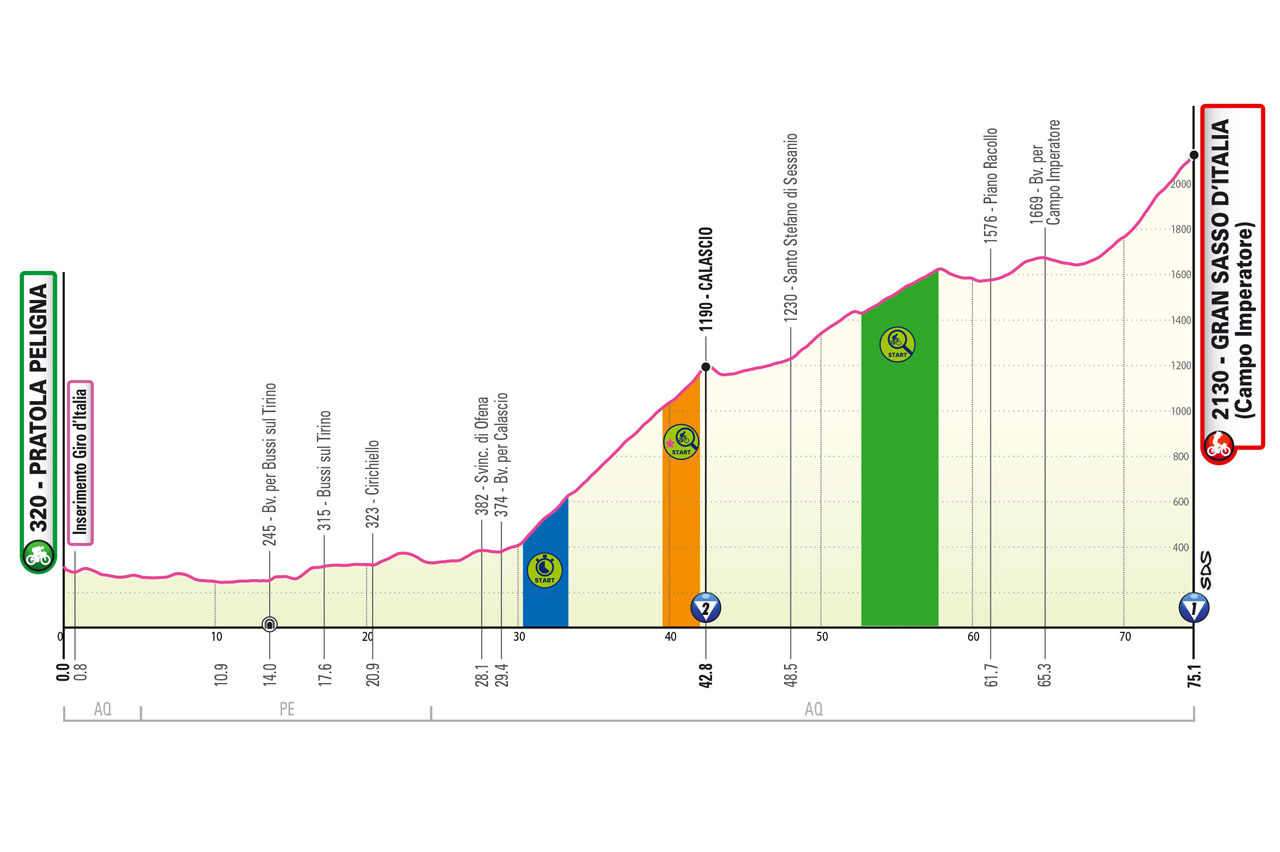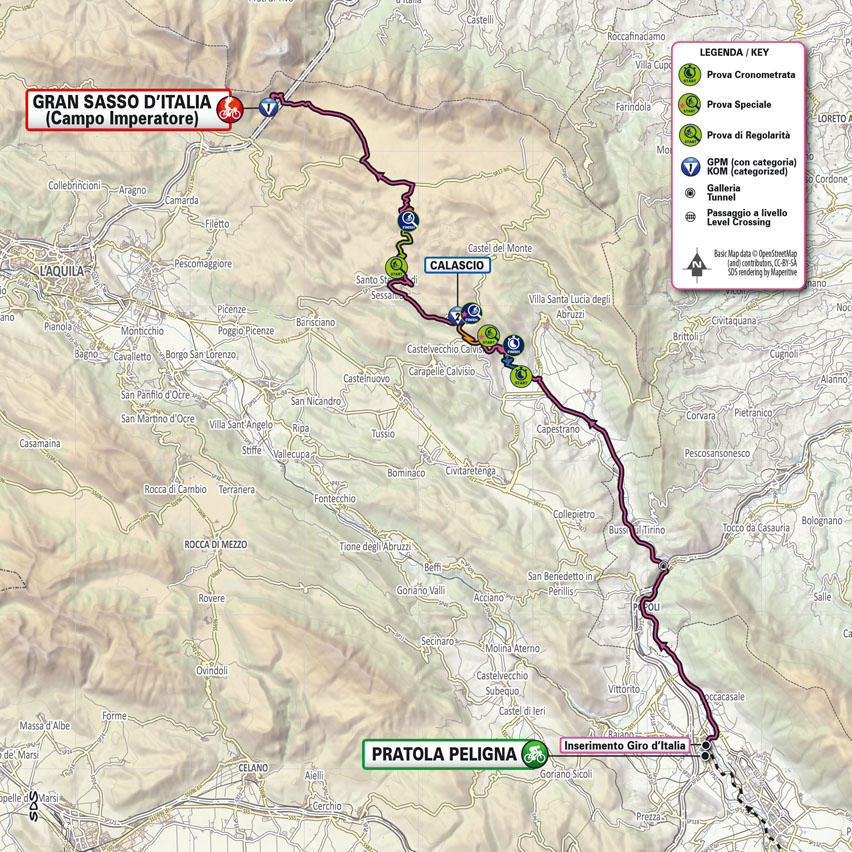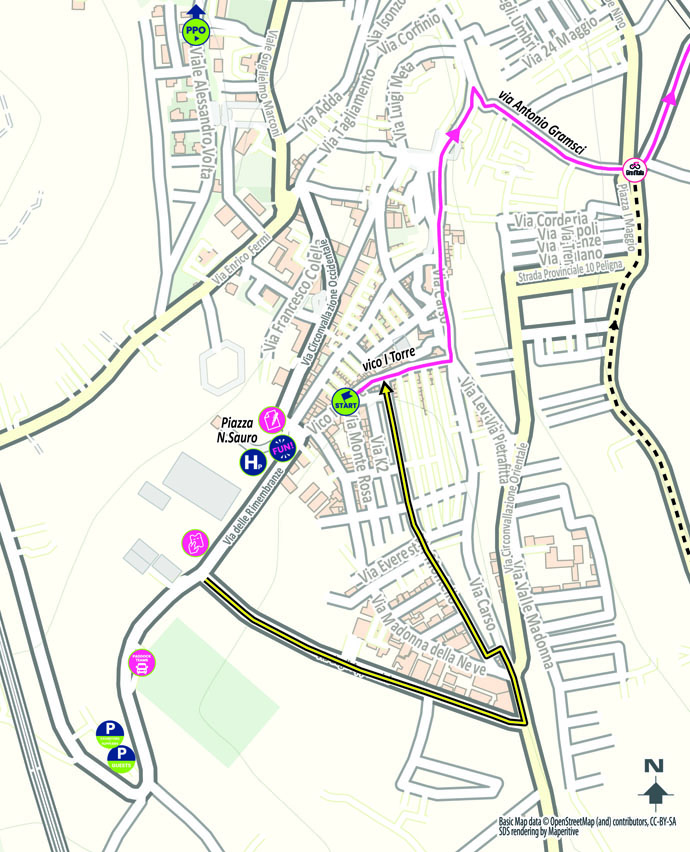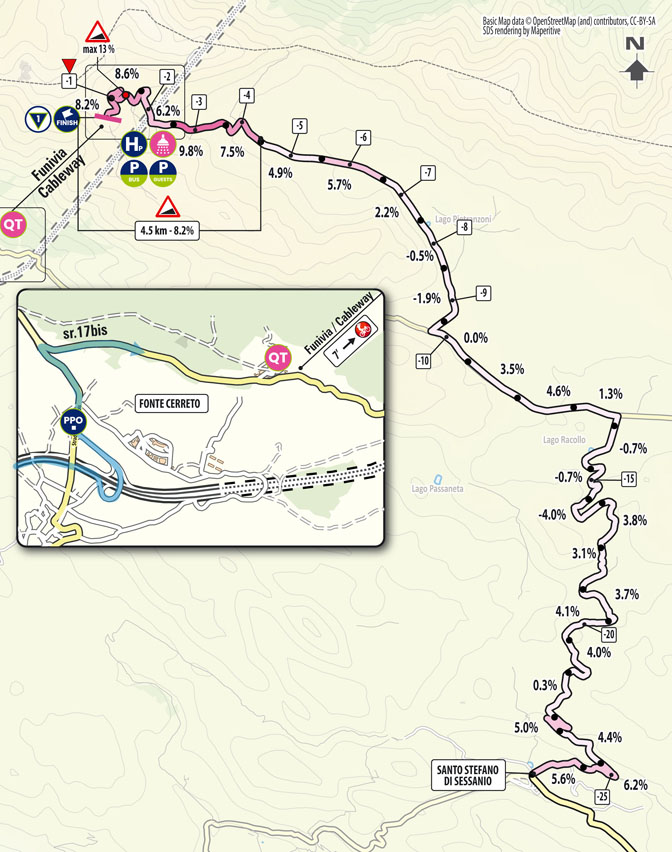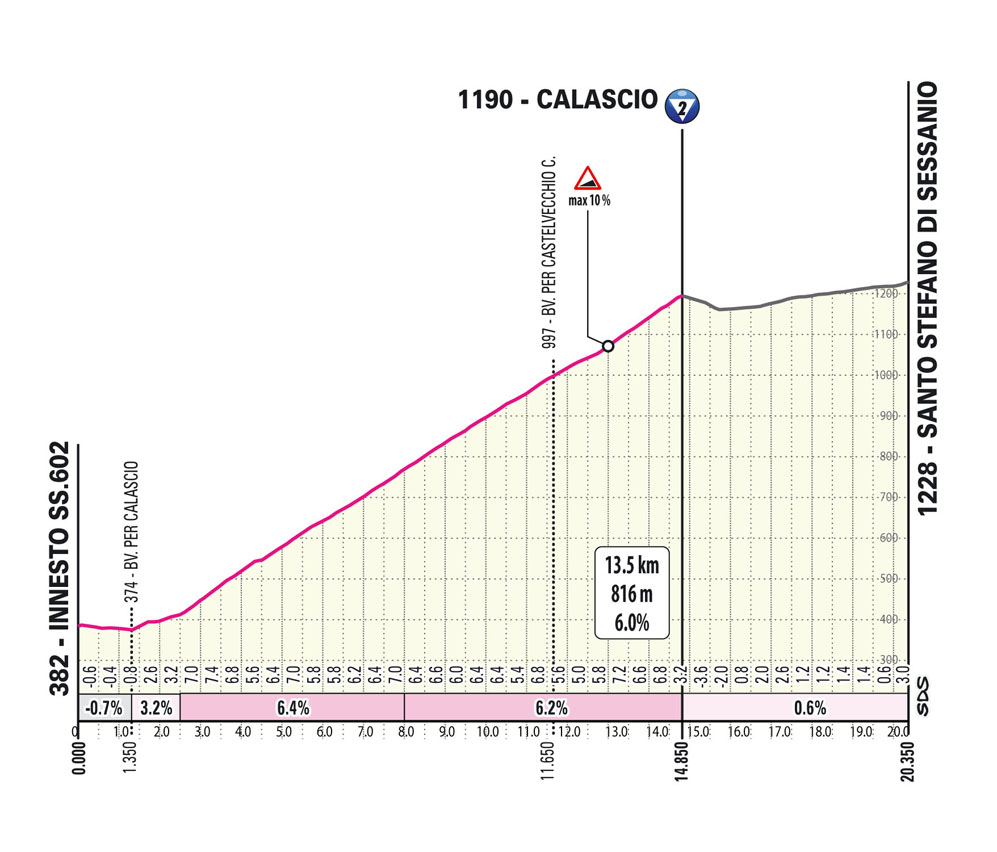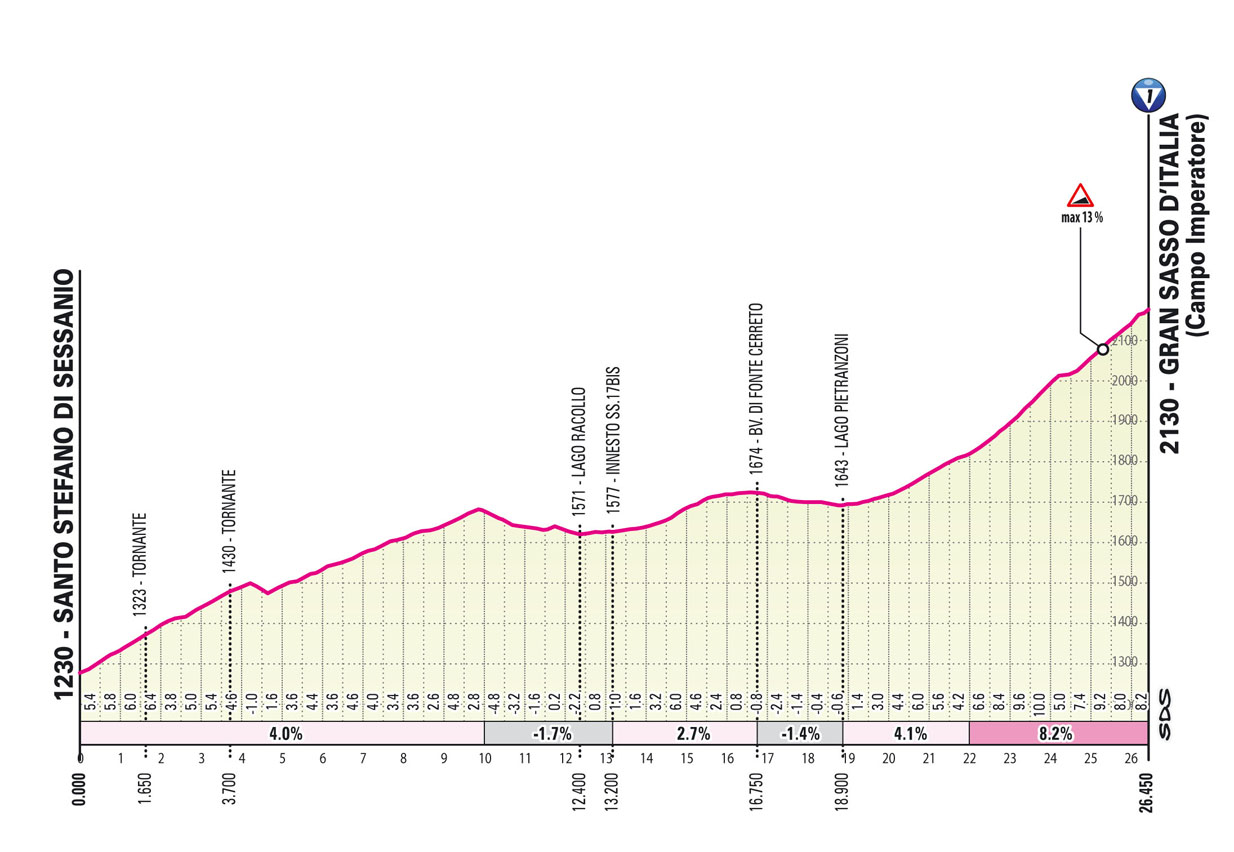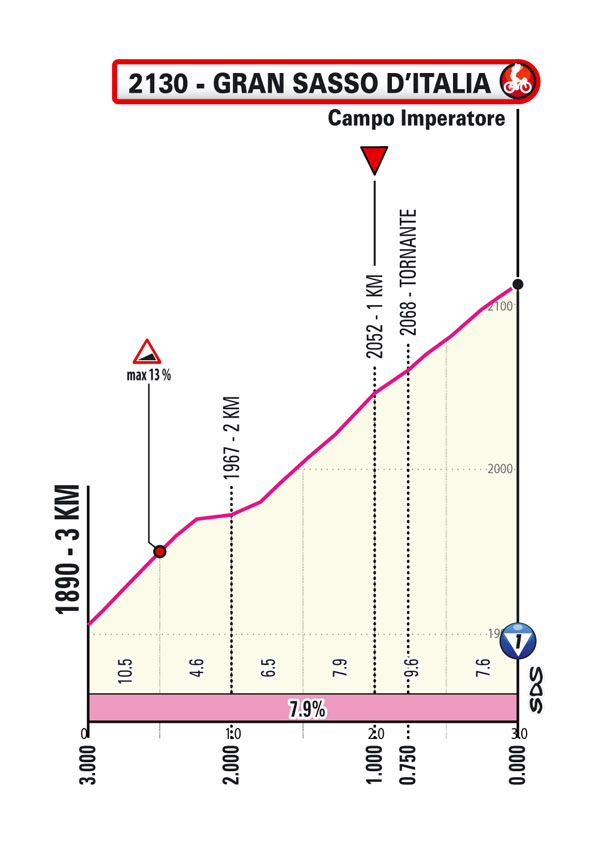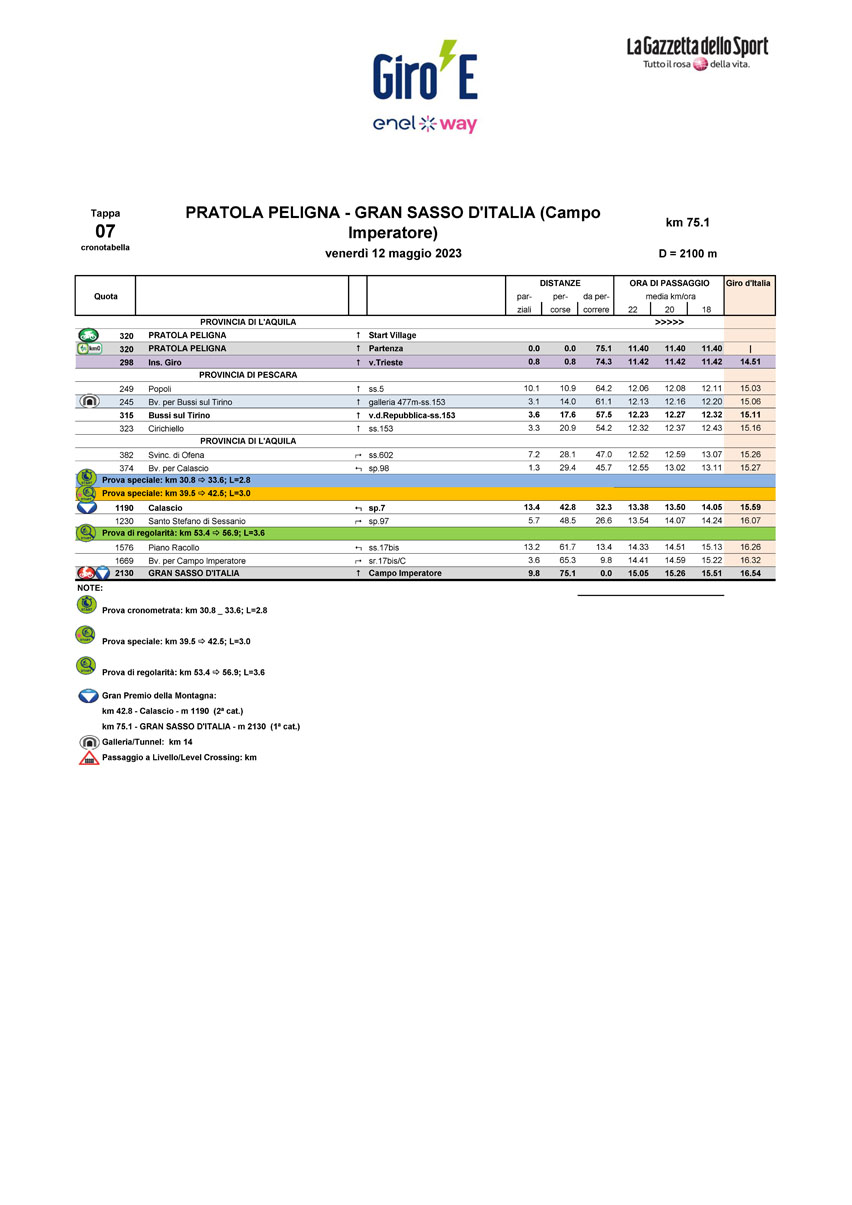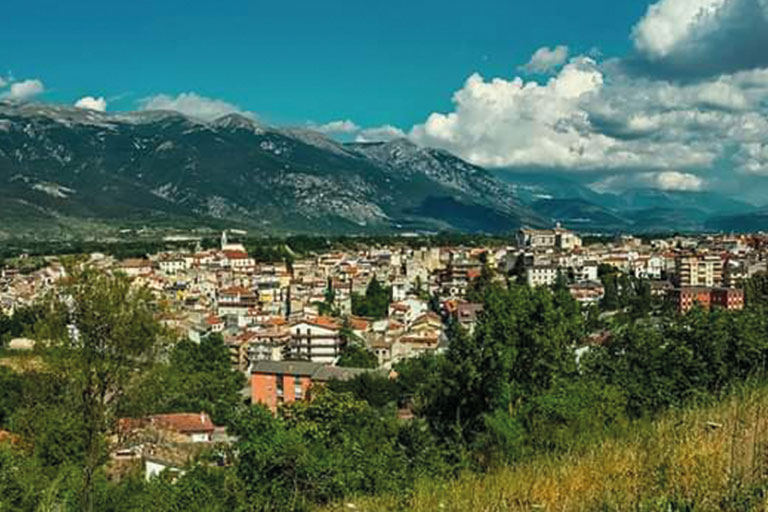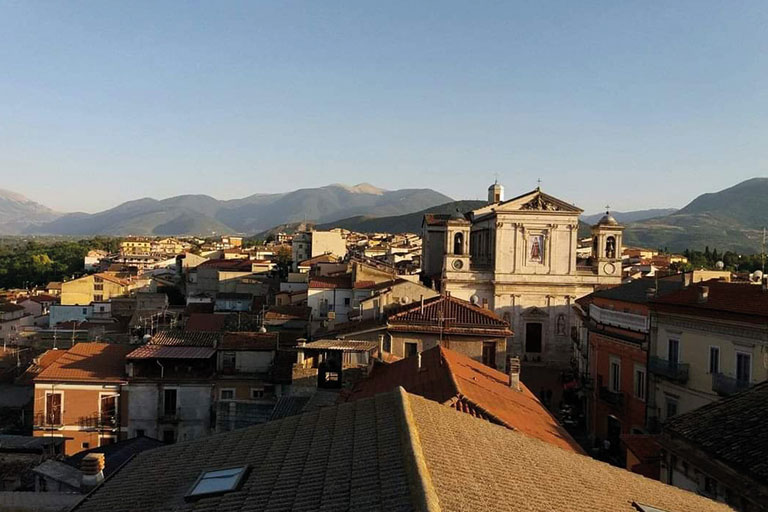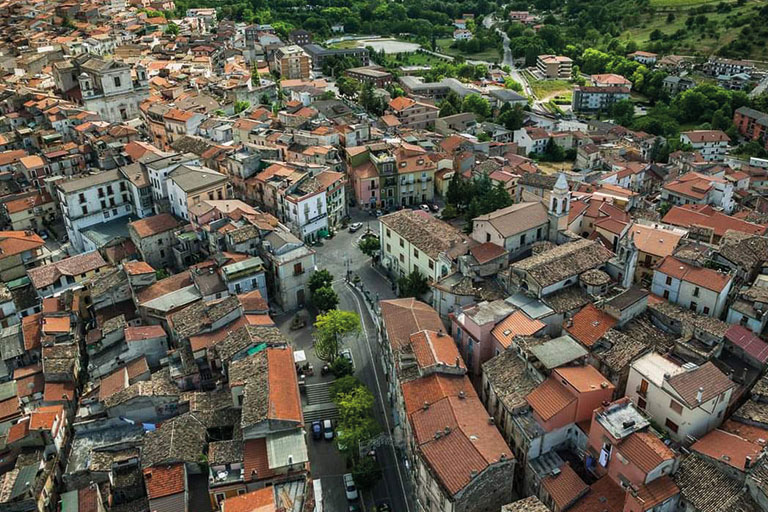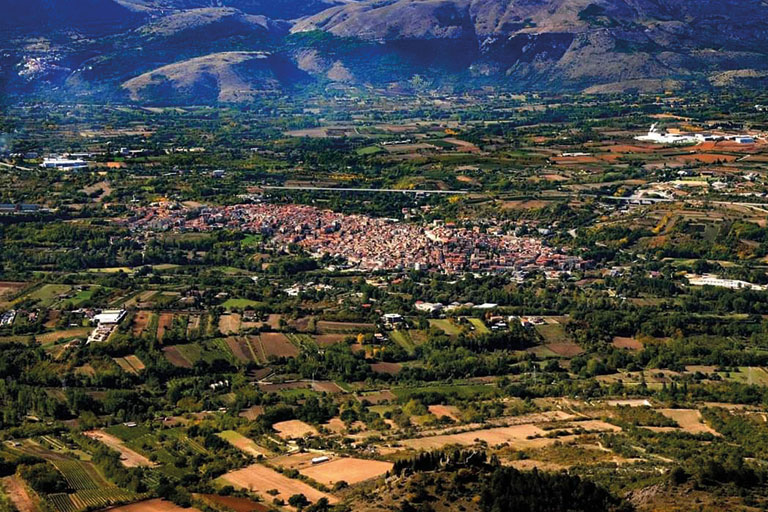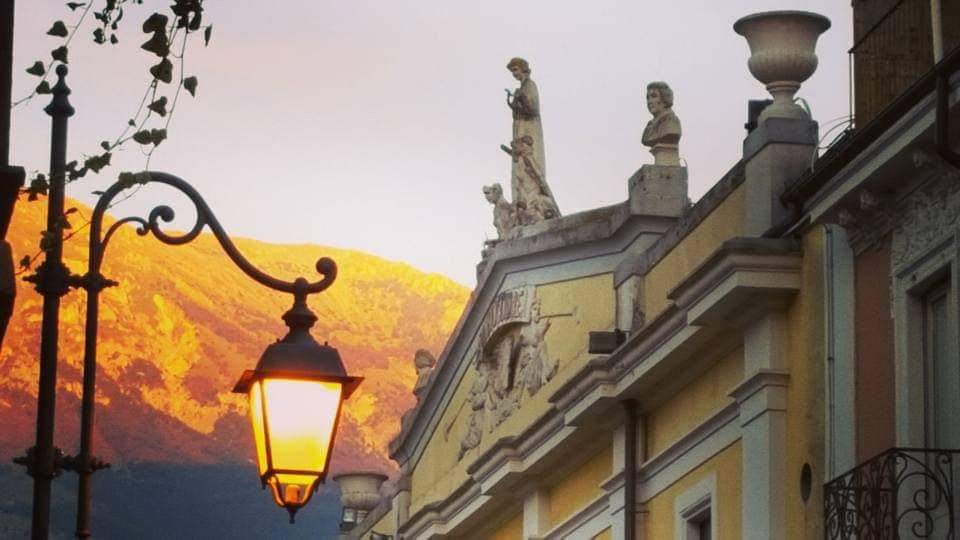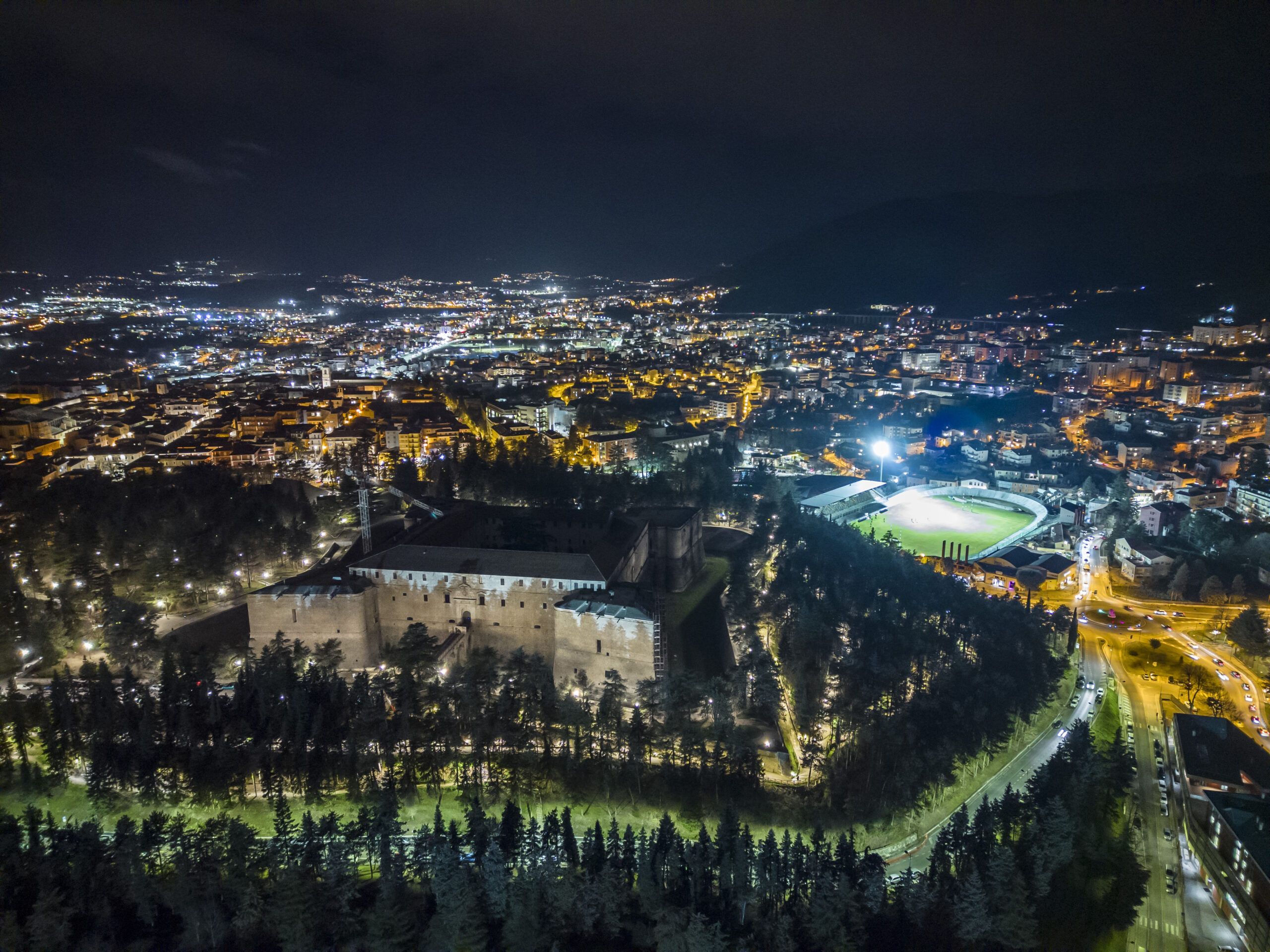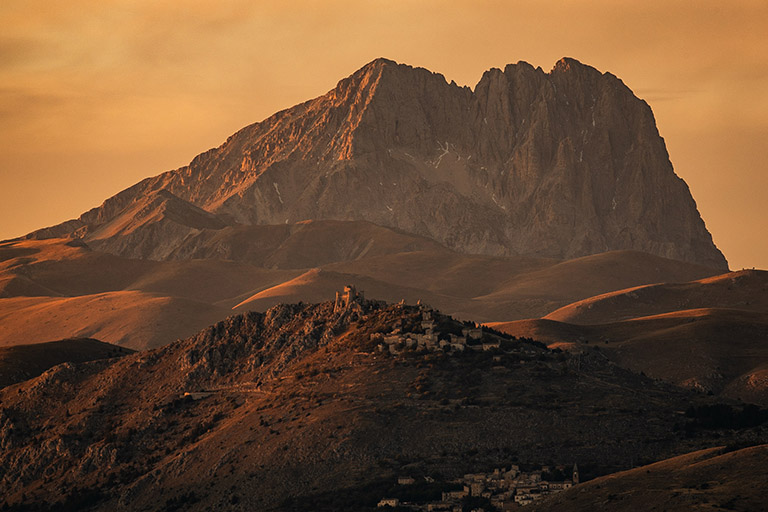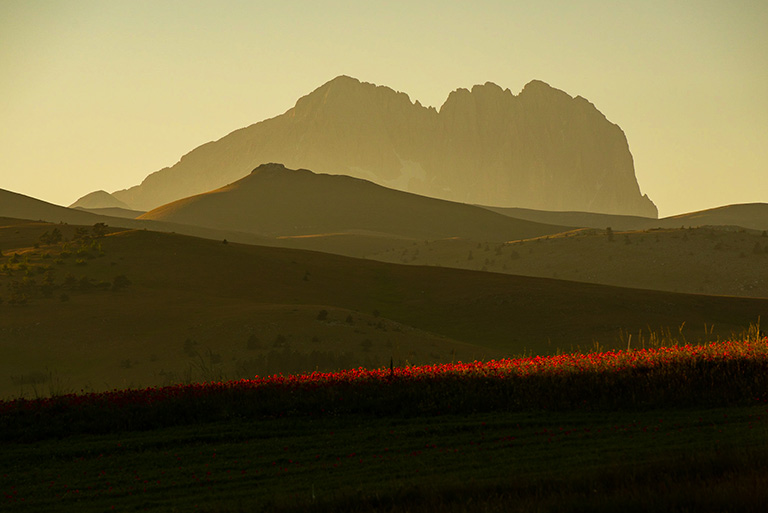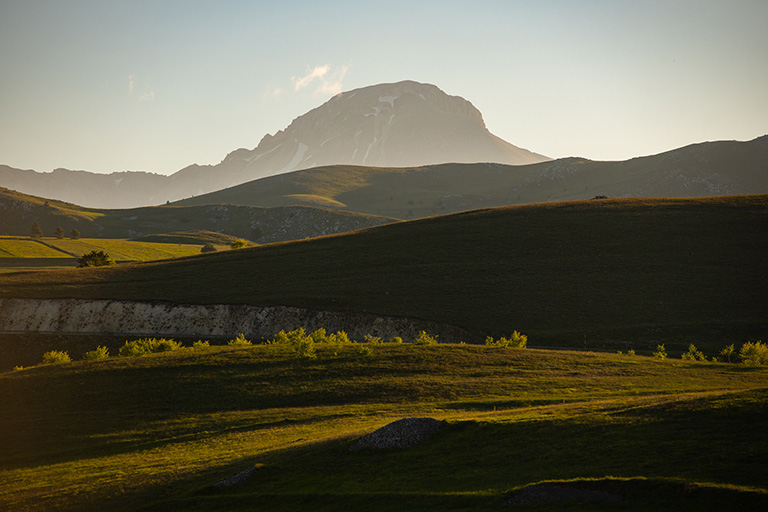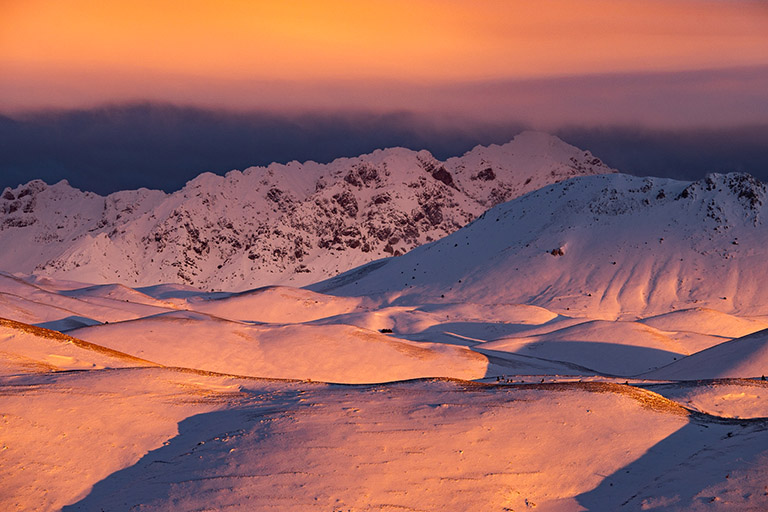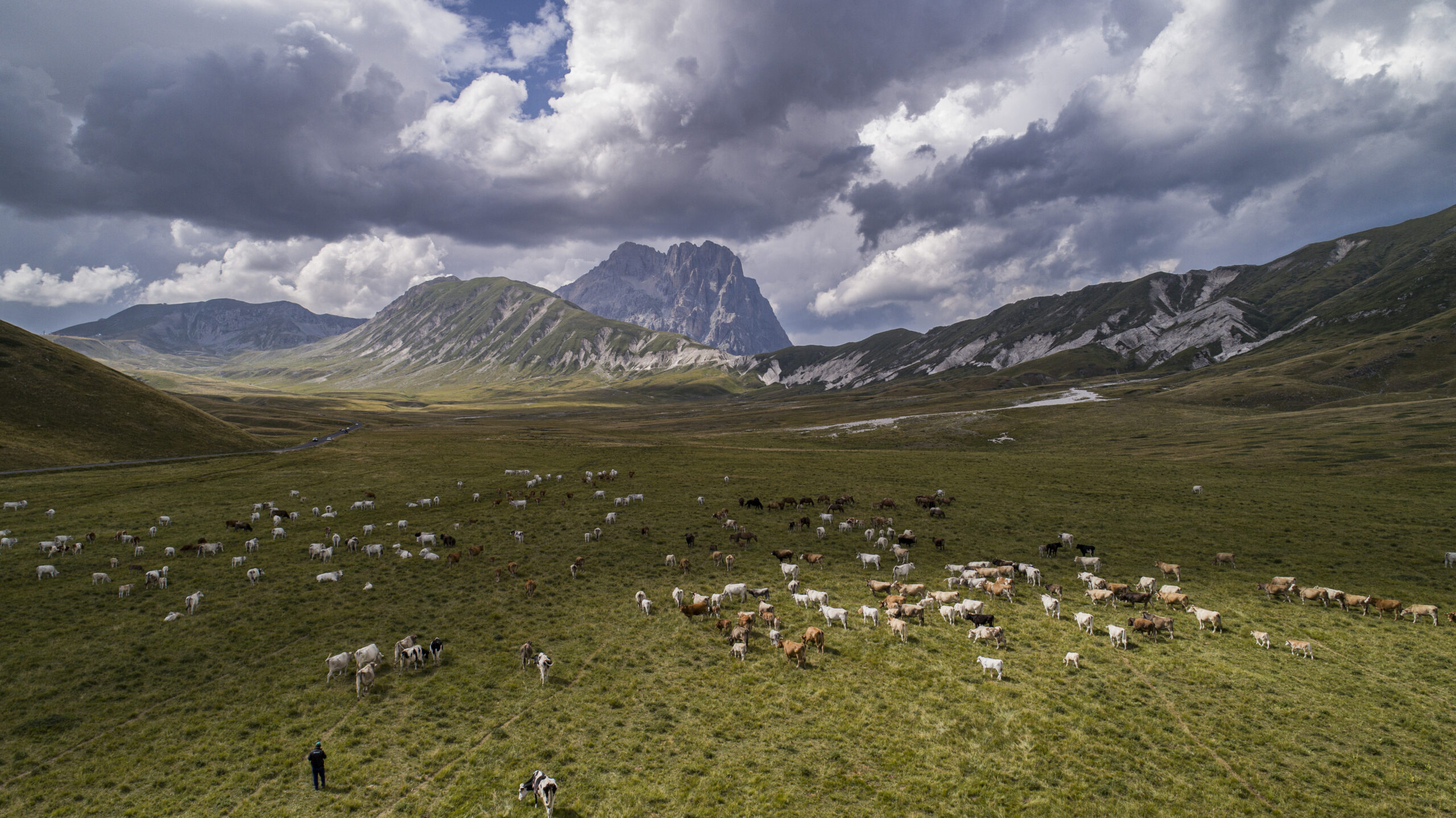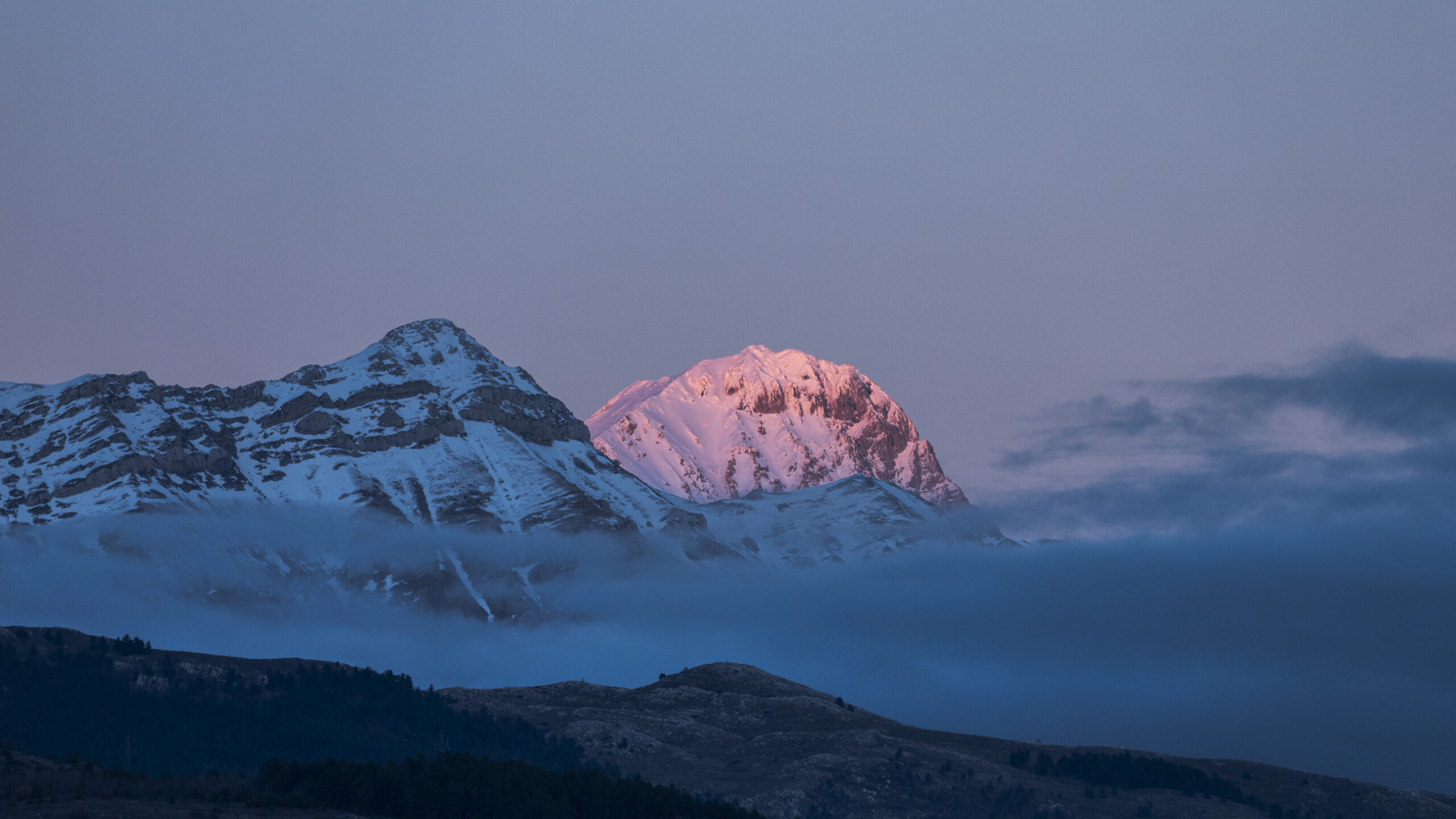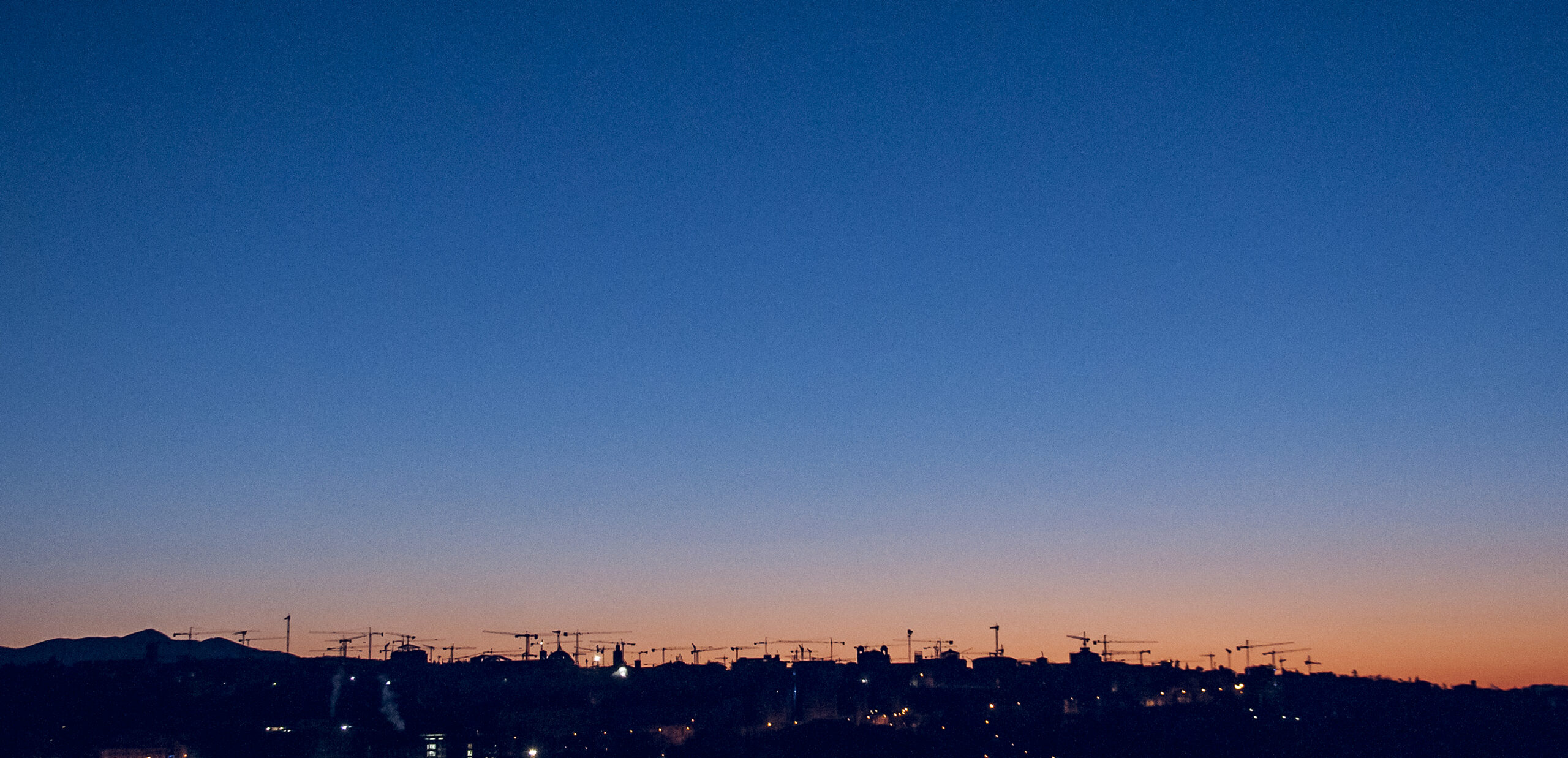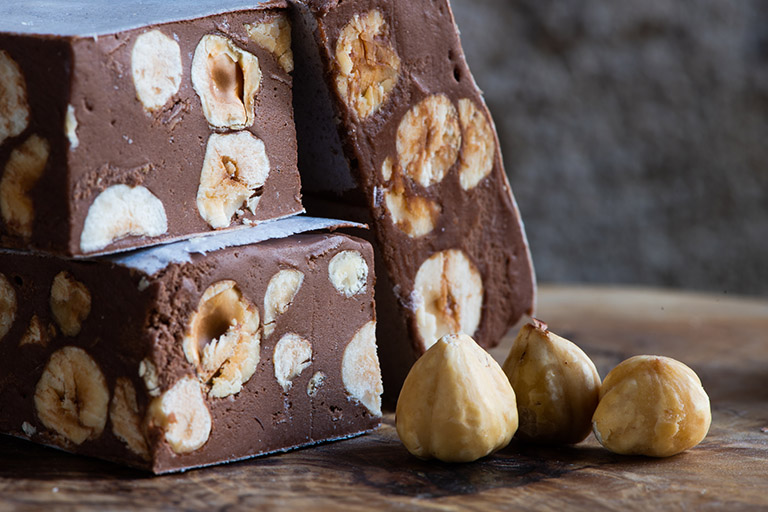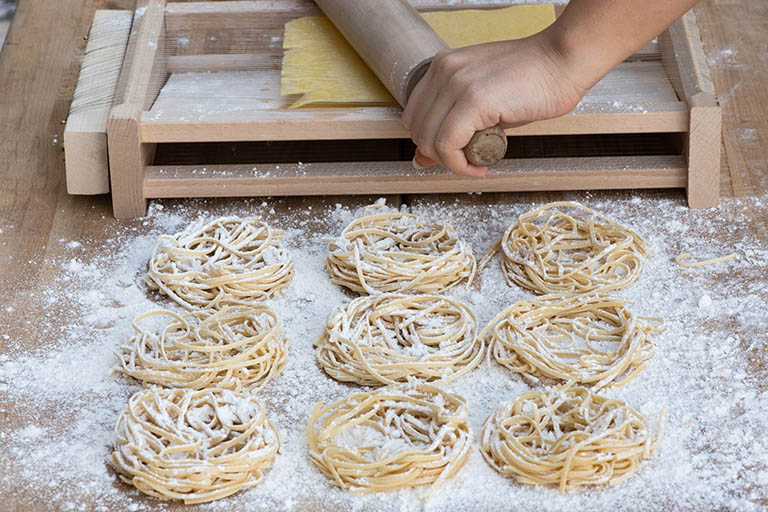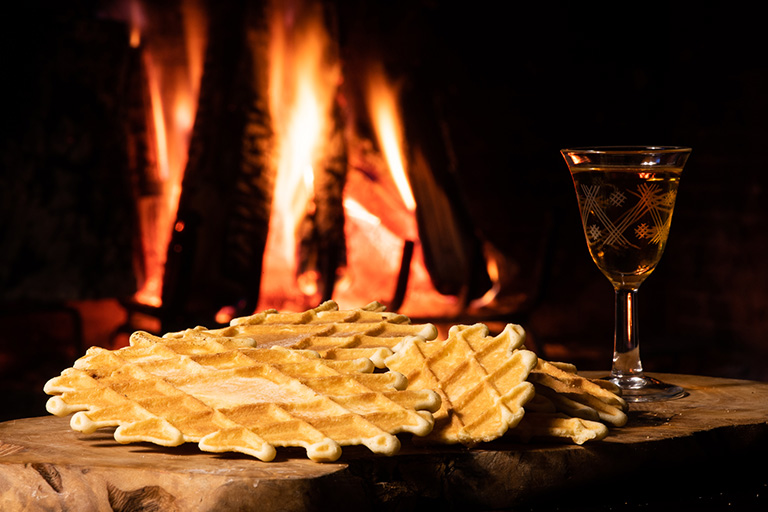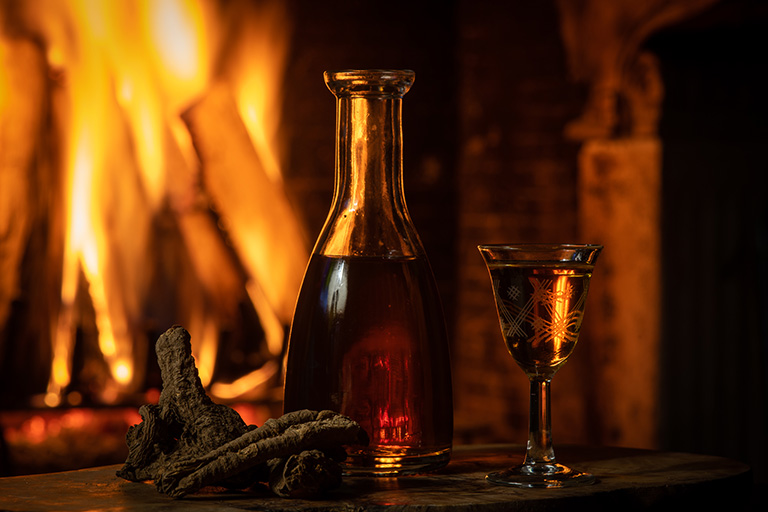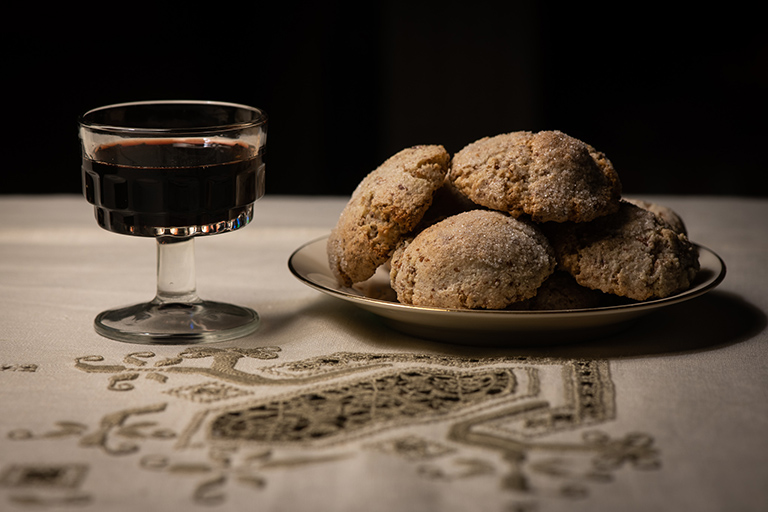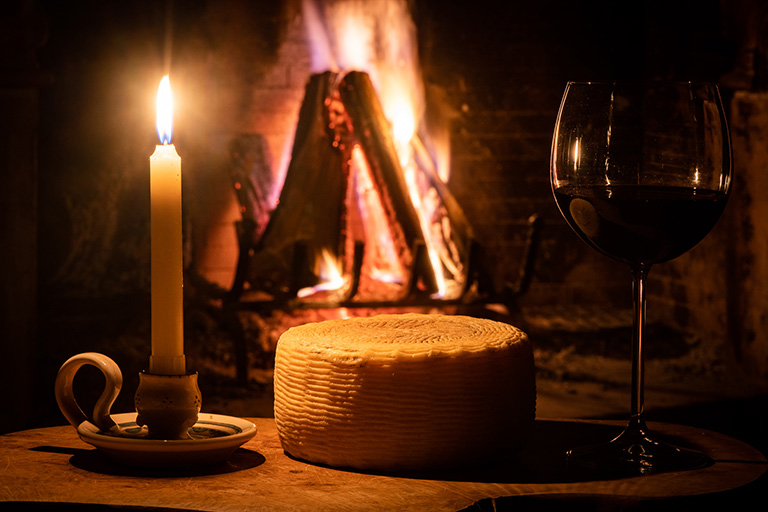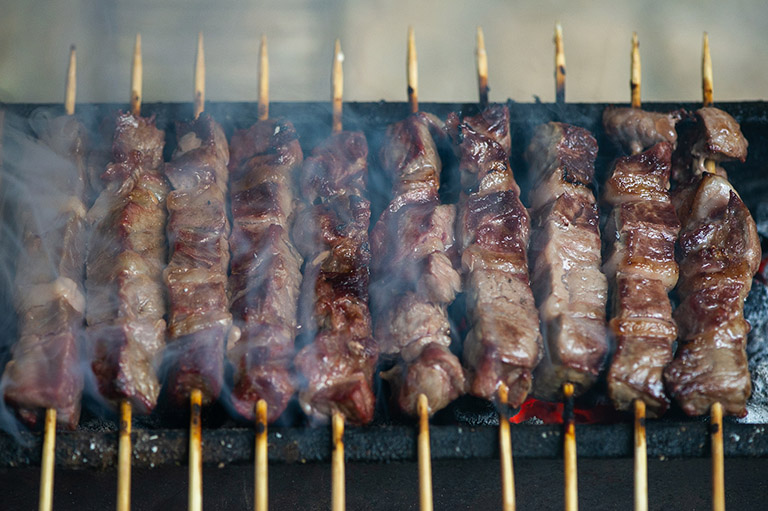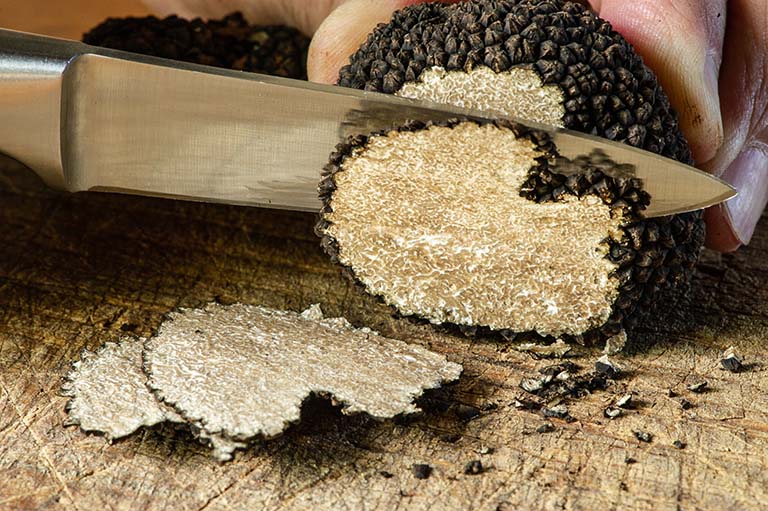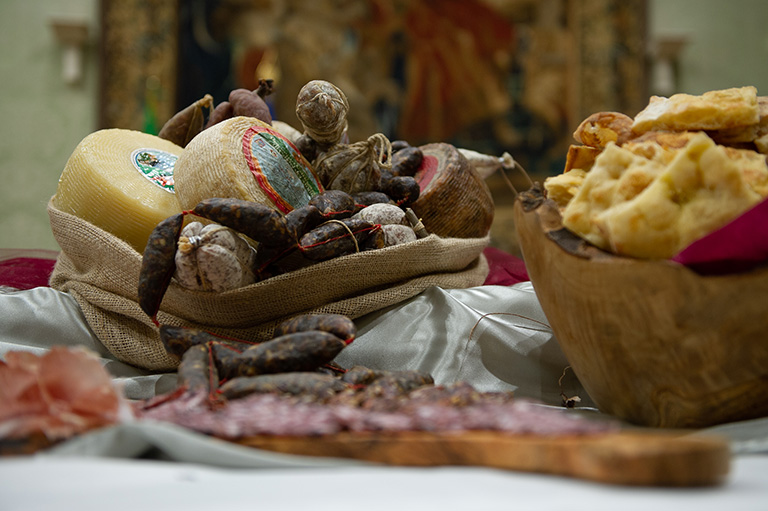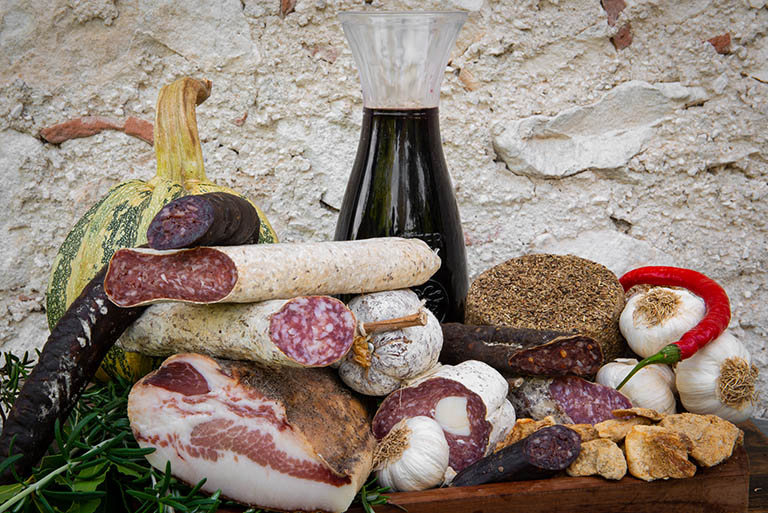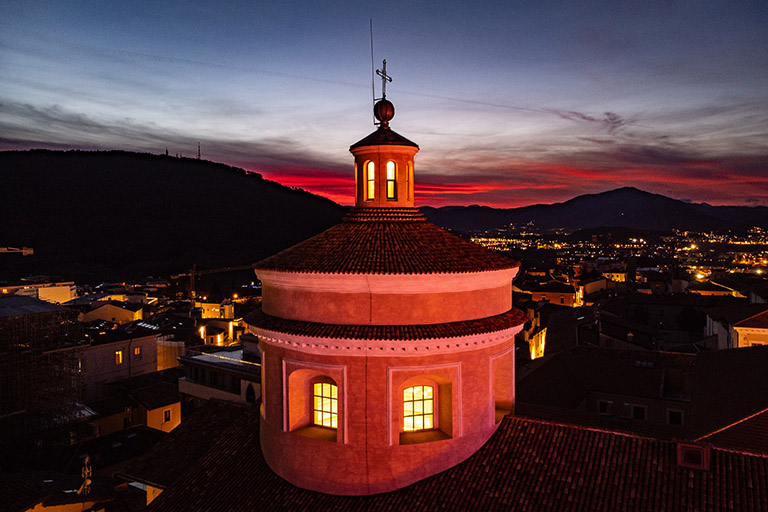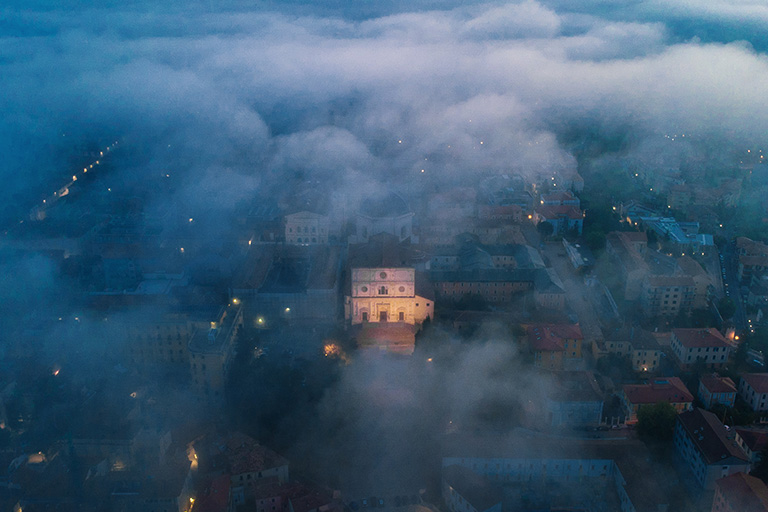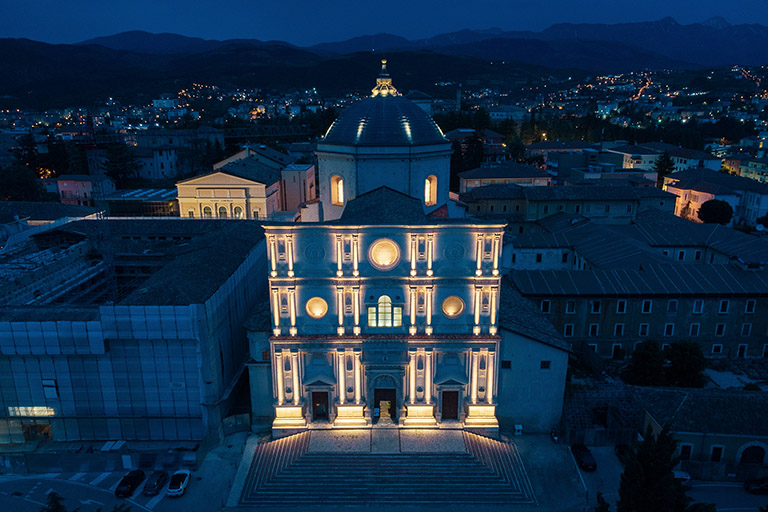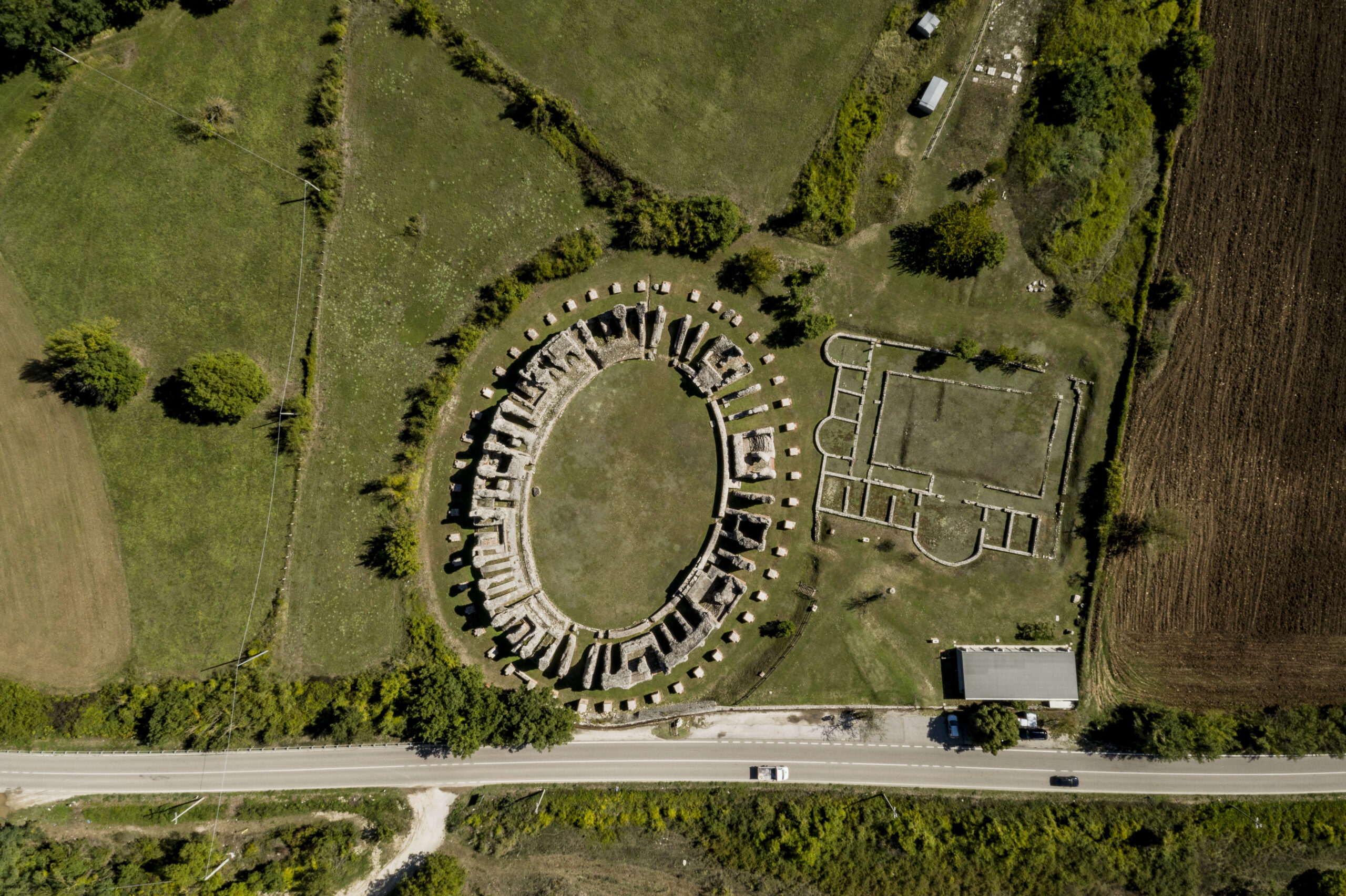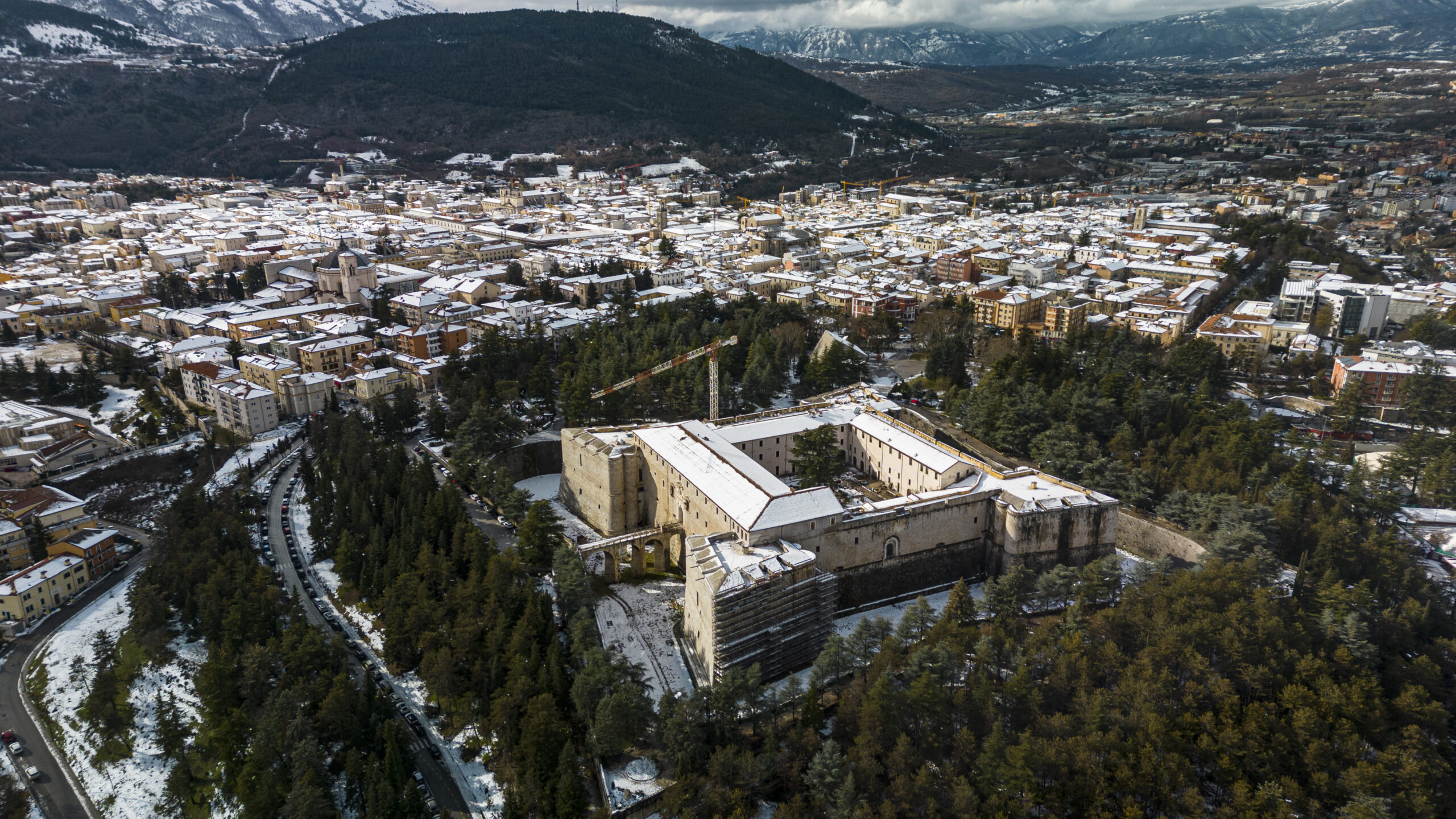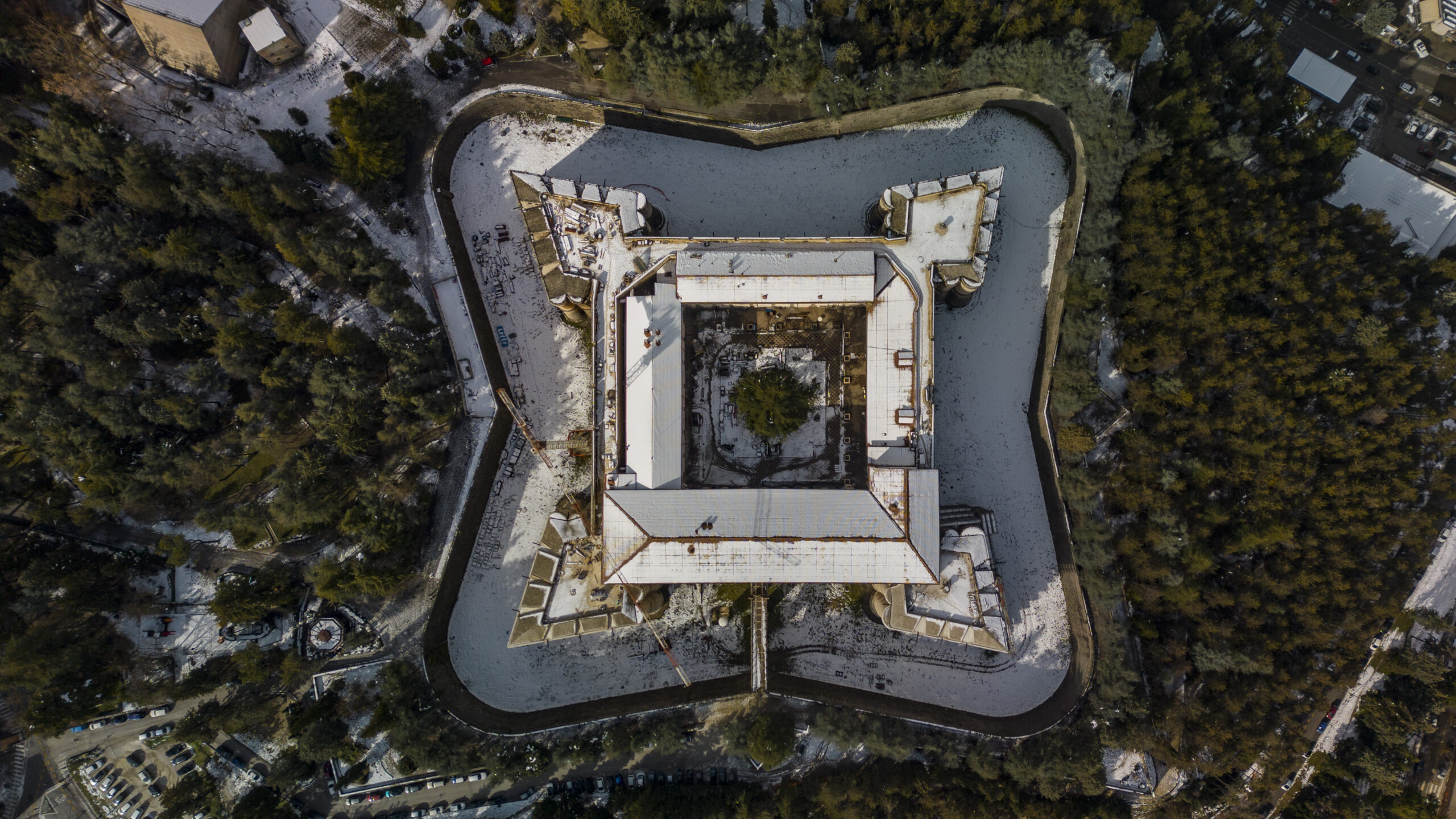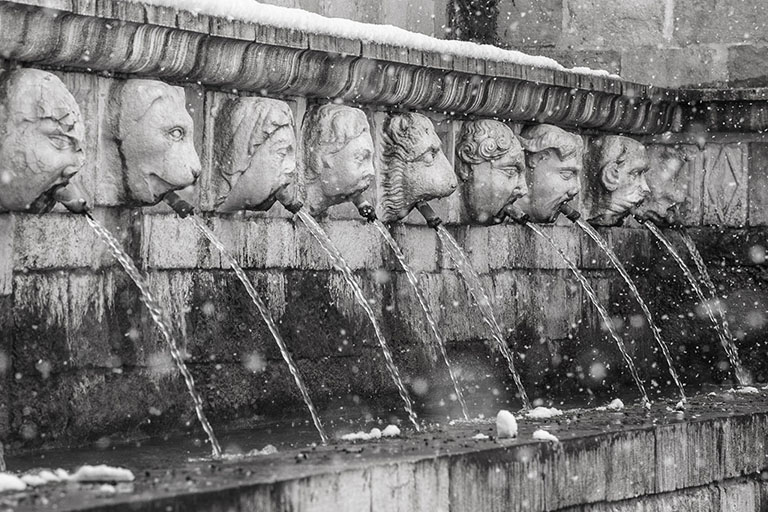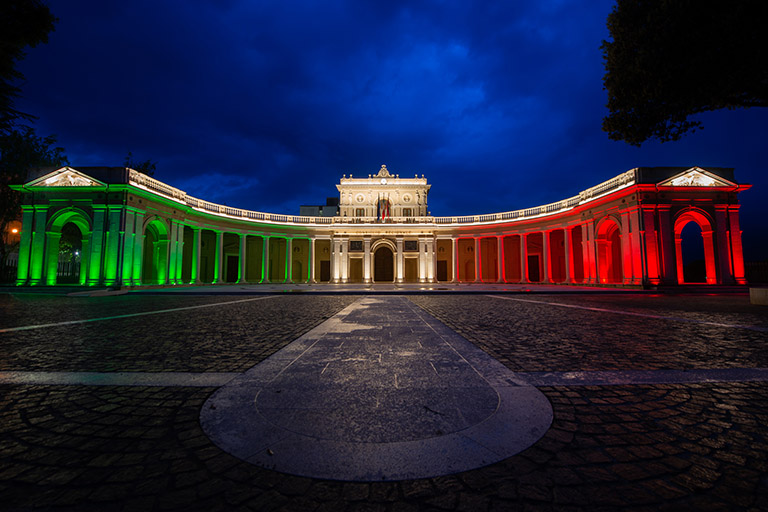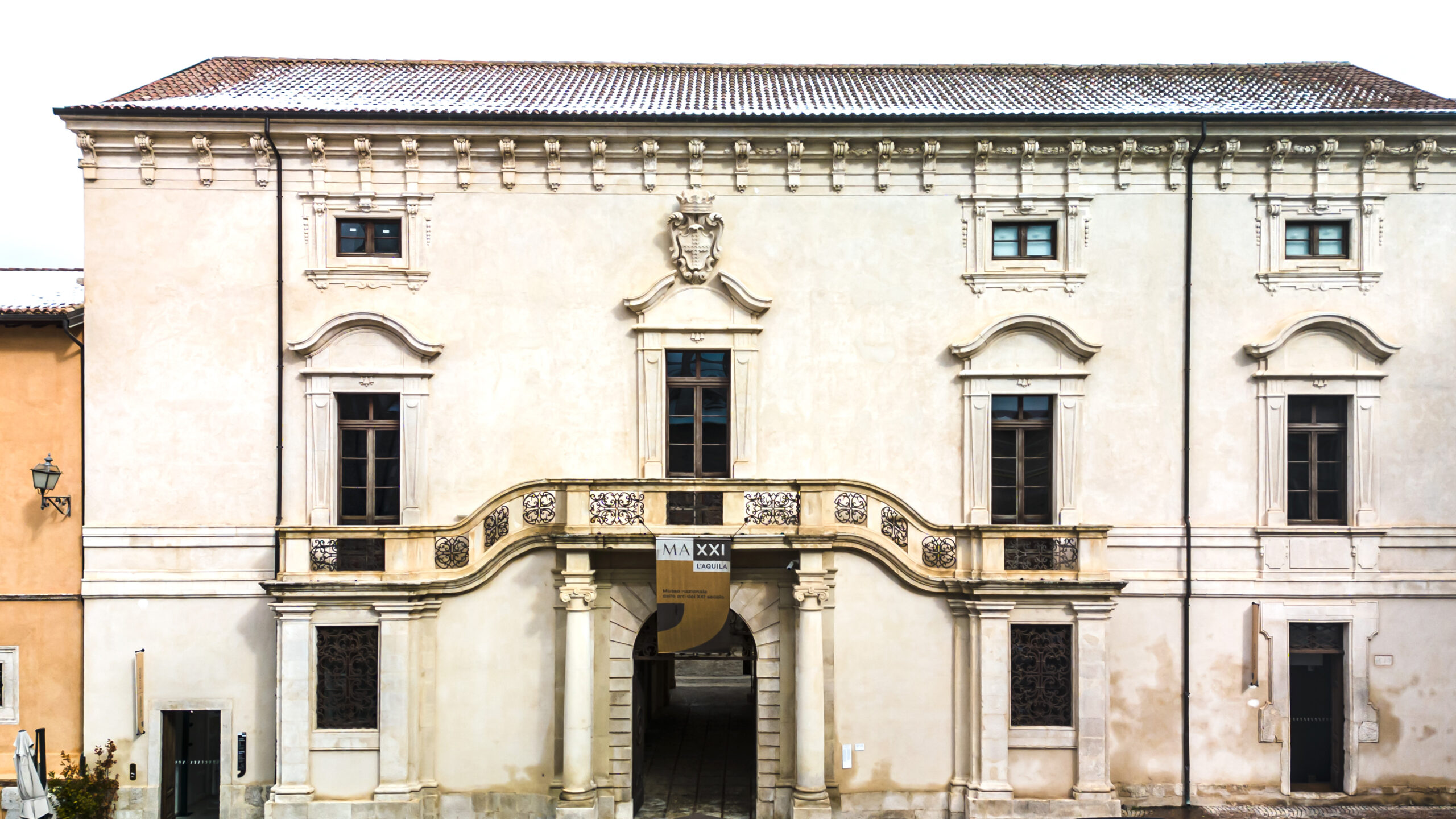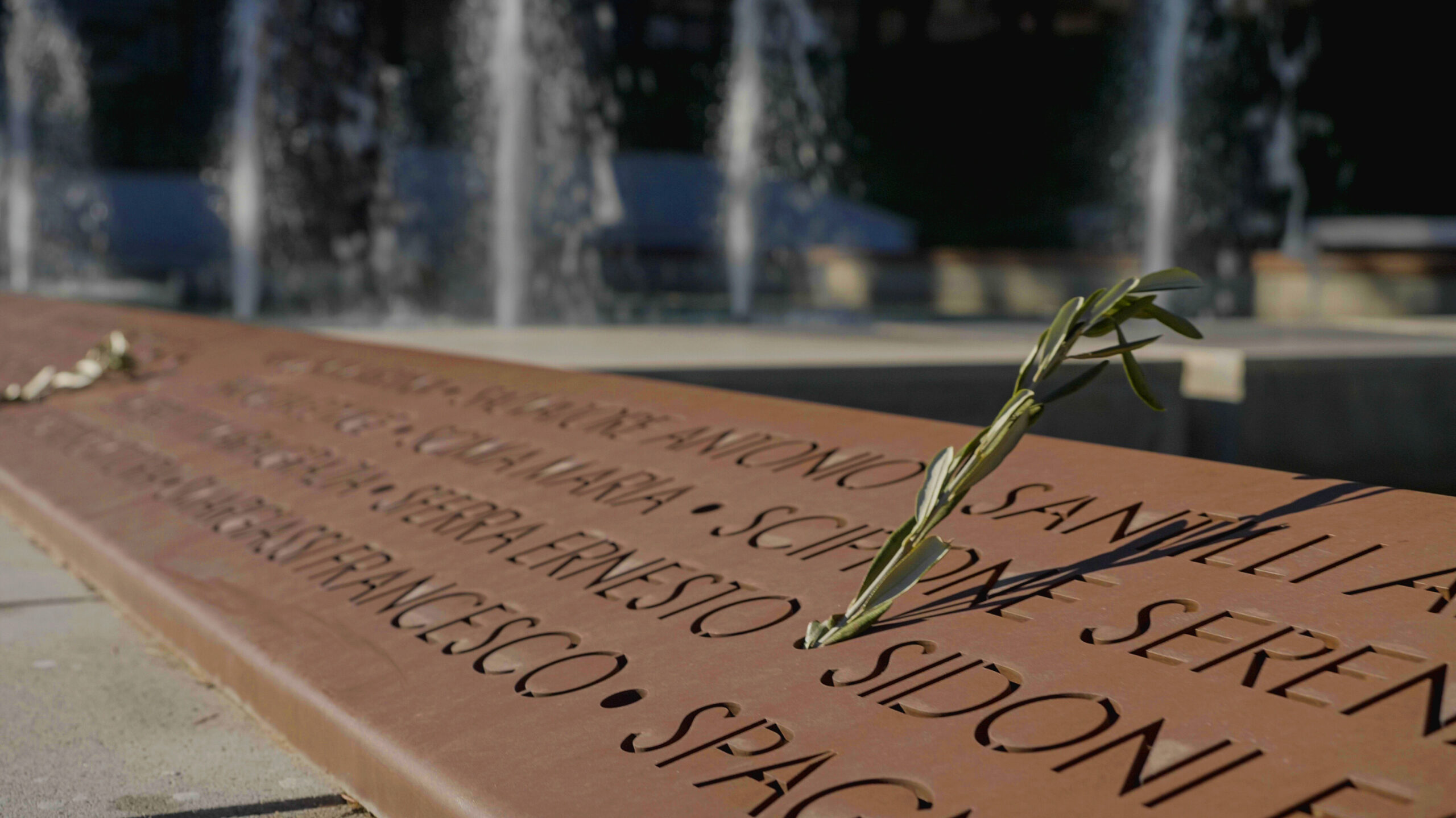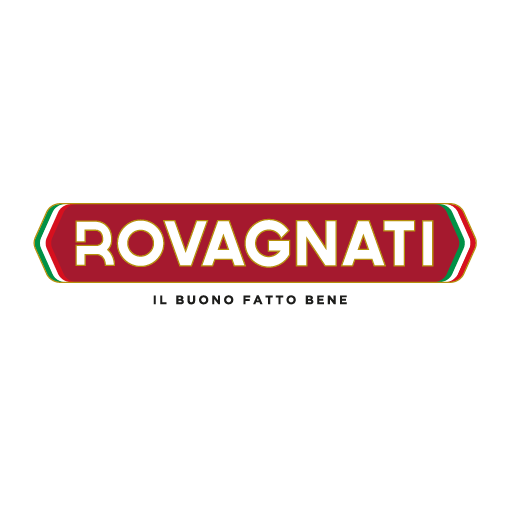profile
map
start / finish
climb detail
final kilometres
itinerary timetable
tourist info
Host city:
PRATOLA PELIGNA
Touristic Information
The first document in which the name of Pratola appears (“in loco Pratulae”) is an agricultural contract dated 997. From 1863, by Royal Decree, the town assumed the name of Pratola Peligna.
On January 9, 2006 the Municipality of Pratola was awarded the Bronze Medal of Civil Merit by the President of the Republic.
The cult of the Madonna della Libera
According to legend, during the terrible plague of 1456, a farmer dreamed of the liberating Madonna, who announced to him the end of the epidemic.
The festival is celebrated every year on the first and second Sunday of May.
Gastronomy
The “beans of Pratola”, “poverelli” and “cannellini”, “the seven soups”, and scrippelle. The “curly sagna with ricotta and lamb ragout.
“le pizzelle”, the “ceci ripieni (chickpeas stuffed with chickpea purée, cooked must, chocolate and candied fruit) and the “Carnival” and “Easter” pizzas.
Beverages
In Pratola there are some important wineries and citizens who produce quality live wines, among these wines deserve mention Montepulciano d’Abruzzo, Cerasuolo and Trebbiano.
Medieval village called “Dentro la Terra”
Sanctuary of the Madonna della Libera
Church of San Pietro Celestino
Churches of Santa Maria della Pietà and Madonna delle Grazie
Church of San Rocco
Palazzo Colella Santoro
The “Museo della Civiltà Contadina” (rooms of the “Old Mill” of the Celestines).
the cinema theater D’Andrea
CAMPO IMPERATORE
Overview
The Campo Imperatore plateau lies within the Gran Sasso d’Italia massif at an altitude of between 1,500 and 1,900 metres, not far from the city of l’Aquila.
L’Aquila, the capital of Abruzzo, is an ancient city whose origins date back to 1254. Distinguished for its history and monuments, it experienced a period of extraordinary economic flourishing throughout the Middle Ages and up to the 16th century, becoming the second largest city in the Kingdom of Naples. Starting from the sixteenth century it housed a university and, towards the end of the fifteenth century, one of the first printing presses. Among its main monuments, which include important palaces, courtyards and churches, the basilica of Santa Maria di Collemaggio stands out, a jewel of the Abruzzo Romanesque style, built starting from 1288, with the majestic facade in white and pink stone decorated with rosettes; the basilica of S. Bernardino da Siena, dating back to the mid-15th century, with an elegantly sculpted white stone facade; the monumental Fontana delle 99 Spouts, dating back to the XIII century; the Romanesque churches of San Pietro da Coppito, with valuable theories of fresco paintings, and of San Silvestro, which, in addition to the remains of the original pictorial decoration, houses a copy of Raphael’s Visitation, the original of which is now in the Prado; the baroque church of Santa Maria del Suffragio, built in memory of the victims of the dramatic earthquake of 1703, with a chapel designed by Valadier.
The monumental evidences are framed by a naturalistic context of rare charm, since the city rises at the foot of the Gran Sasso d’Italia massif, surrounded by a mountain habitat rich in woodland and fauna peculiarities and by villages and castles of considerable historical and monumental importance, in an area that is included in two national parks.
The main event, with an important historical and spiritual value and with a significant identity connotation, is the Celestinian Pardon, included in the UNESCO intangible heritage list, an annual jubilee, which takes place from 23 to 29 August and takes its name from the Bull of Forgiveness , the document with which the Holy Pope Celestine V, the day after his coronation as pope, which took place on 28 August 1294 in the basilica of Collemaggio, wanted to give a plenary indulgence to anyone who had crossed the Holy Door of the Basilica of Collemaggio, between the vespers of 28 and those of 29 August. The event, which includes a rich program of cultural events, sees its main moments in the opening ceremony, on August 23, with the arrival of the Morrone Fire, after a route that follows the itinerary taken by Celestino V to reach L ‘Aquila from the Hermitage of Morrone, near Sulmona, and in the Historic Procession of 28 August, with which the precious parchment is escorted from the Municipal residence to the basilica, where it will remain on display for 24 hours. The 2022 edition of the event saw the historic presence of Pope Francis, the first pontiff in history to preside over the solemn opening ceremony of the Holy Door, who, as a further tribute to the City, wanted to extend the Celestinian Jubilee until 2023.
Food
The city of L’Aquila and its territory have numerous food and wine excellences.
In particular, the saffron, the lentils of Santo Stefano stand out above all, as well as various types of native legumes, and the nougat, a typical dessert of the Christmas tradition. Other typical products of the area are also very well known, such as dairy products, cheeses and cured meats, which have particular processes, as well as liqueurs, among which the gentian one is particularly appreciated.
Points of Interest
The first urban itinerary begins at the basilica of Collemaggio, an exquisite example of Abruzzo architecture in a mixture of architectural styles, from Gothic to Baroque, founded in 1288 by Pietro del Morrone. Of note, the 15th-century façade with its two-tone geometric white-and-pink intarsia, and three portals surmounted by as many rosettes. The interior shows a long nave, with two aisles and a transept, closed by three apses, and 14th–15th-century frescoes.
Just 200m south we find Parco del Sole, with its lovely natural setting that is home to a playground, a nature trail and a performing arts site housing Beverly Pepper’s Amphisculpture.
The second itinerary starts from the church of Santa Maria del Soccorso (15th century), located to the north-east, outside the urban walls. A striking fusion of Medieval and Renaissance elements, once again using the white–pink intarsia with horizontal listing, it has two distinctive towers. Moving northeast on Viale Panella and then on Via Pescara, we arrive at the Porta Castello gate, erected at the same time as the Spanish fort (16th century). Entering the park, we appreciate the magnificence of the castle. The square-plan building has an inner court with four large corner bastions and is protected by a huge moat, with an imposing masonry bridge accessing the fortress. Nearby we find the Auditorium del Parco, a modern wooden performing arts venue, designed by Renzo Piano after the 2009 earthquake. Leaving Piazza Battaglione Alpini, we find the Fontana Luminosa fountain, one of L’Aquila’s iconic monuments, designed by Nicola D’Antino. Just 100m along Via Tre Spighe, we find the Medieval Convent of Sant’Amico with the 15th-century fresco and portal lunette
Returning to the Fontana Luminosa and heading down Corso Vittorio Emanuele, on the left we find the Nettuno fountain (1881), commemorating Queen Margaret of Austria. Another 200m and we come to the junction with Via Verdi, which leads to the Teatro Comunale (19th century) with its horseshoe interior and stalls, seating 600.
Nearby there is the magnificent basilica of San Bernardino (15th century), in a panoramic position at the top of the staircase in Via Fortebraccio. The three-order façade is by Cola dell’Amatrice (1525) and the grand Latin-cross interior has a nave and two aisles, with large side chapels, one with a splendid altarpiece by Andrea della Robbia. The majestic wooden ceiling, the monumental organ on the entrance choir (Ferdinando Mosca), and the marble tomb with the remains of San Bernardino (Silvestro dell’Aquila, 1505) are all stunning.
The third itinerary starts in piazza Duomo (13th century), with the coeval cathedral of San Massimo (currently closed for restoration), with its Classical revival façade. On the left, the church of Santa Maria del Suffragio (18th century), with an exquisite dome designed by Giuseppe Valadier. Restored after the 2009 earthquake thanks to the French government, the church is open from 9am to 6pm. The square has two fountains, by Nicola D’Antino and made in local stone, with twin bronze statues.
The last itinerary starts from the last gate, Porta di Poggio Santa Maria, added after the construction of the railway station (19th century). The fortified walls were about 4km in length and there were 12 gates with 86 towers. The main gates included Porta Rivera, located 400m further east. On the right, we find the scenic Fontana delle 99 Cannelle, a 13th-century fountain and the oldest public monument in the city. It consists of 93 stone masks and 6 single spouts, from which the water flows. Tradition says that the spouts represent the ninety-nine fortified villages involved in the foundation of L’Aquila in the 13th century. Opposite, we find the church of San Vito alla Rivera, of the same period as the walls, its continuous façade clad in white stone. The a lunette portal is flanked by two sundials.
We are near to the entrance to the MuNDA, national museum of Abruzzo, established in the early 1950s in the historic premises of the Spanish fort, where there are now seven rooms displaying a series of works highly representative of Abruzzo art, from the ancient Abruzzi civilizations to the Baroque period, with archaeological finds, sculptures and paintings (opening hours on the website).


